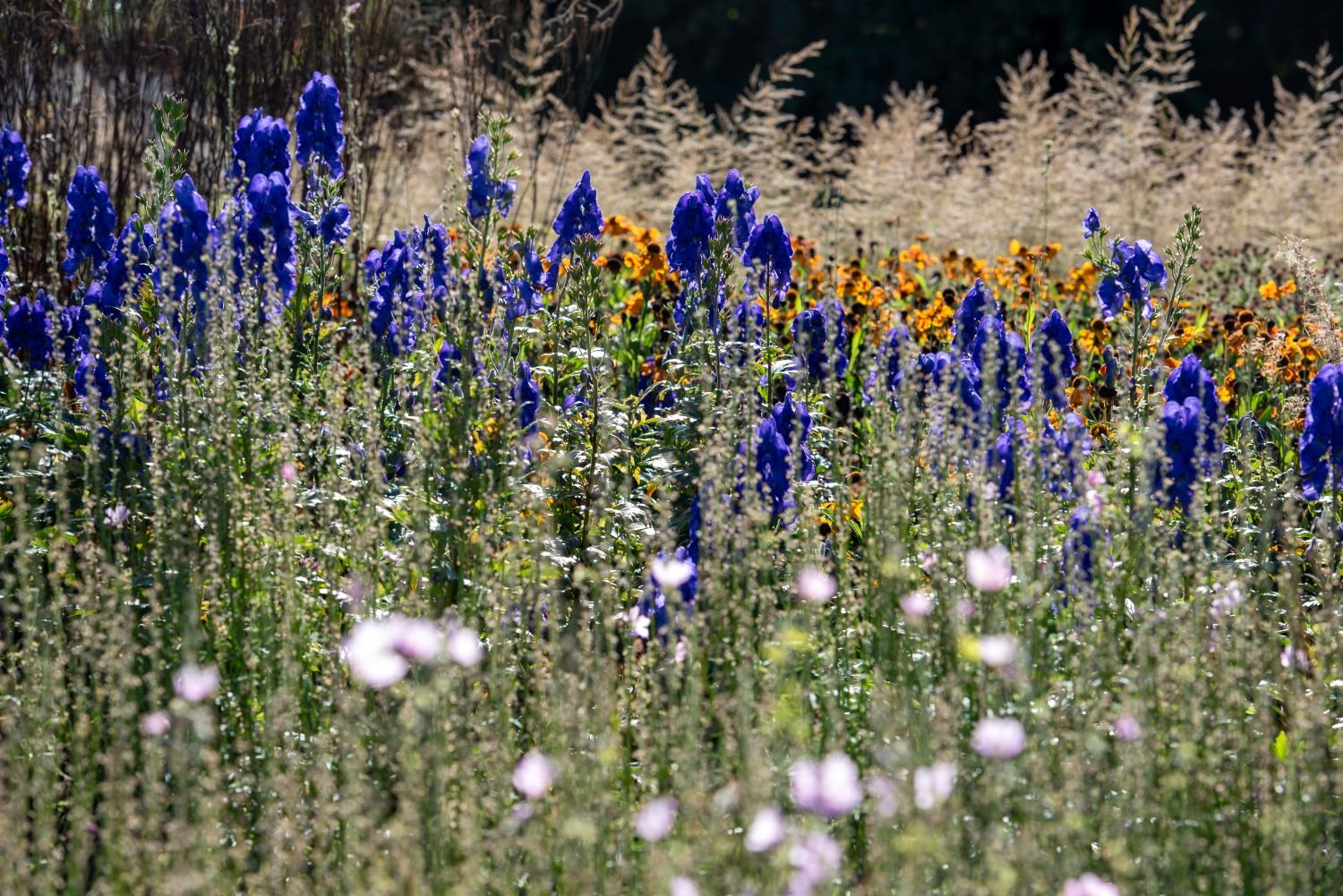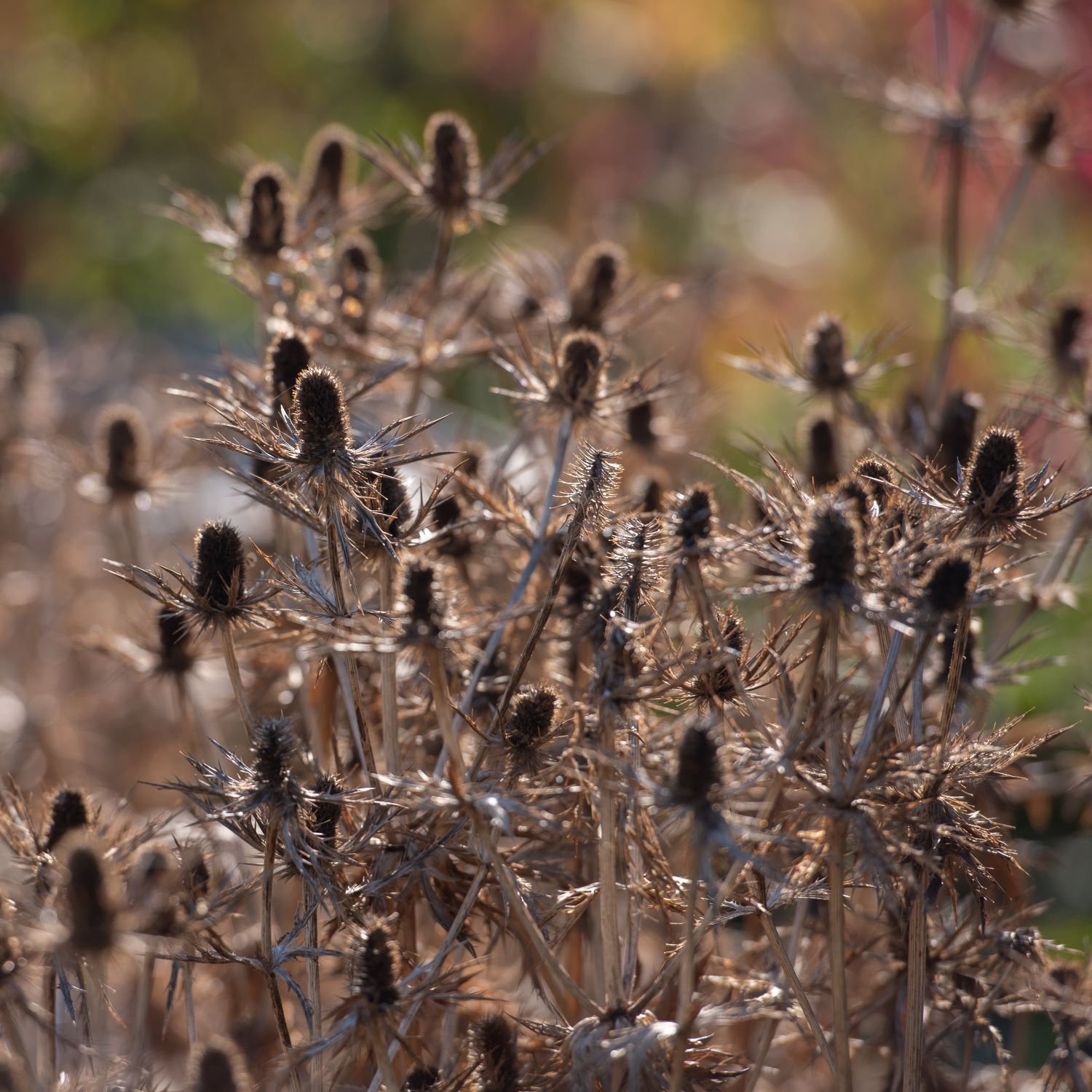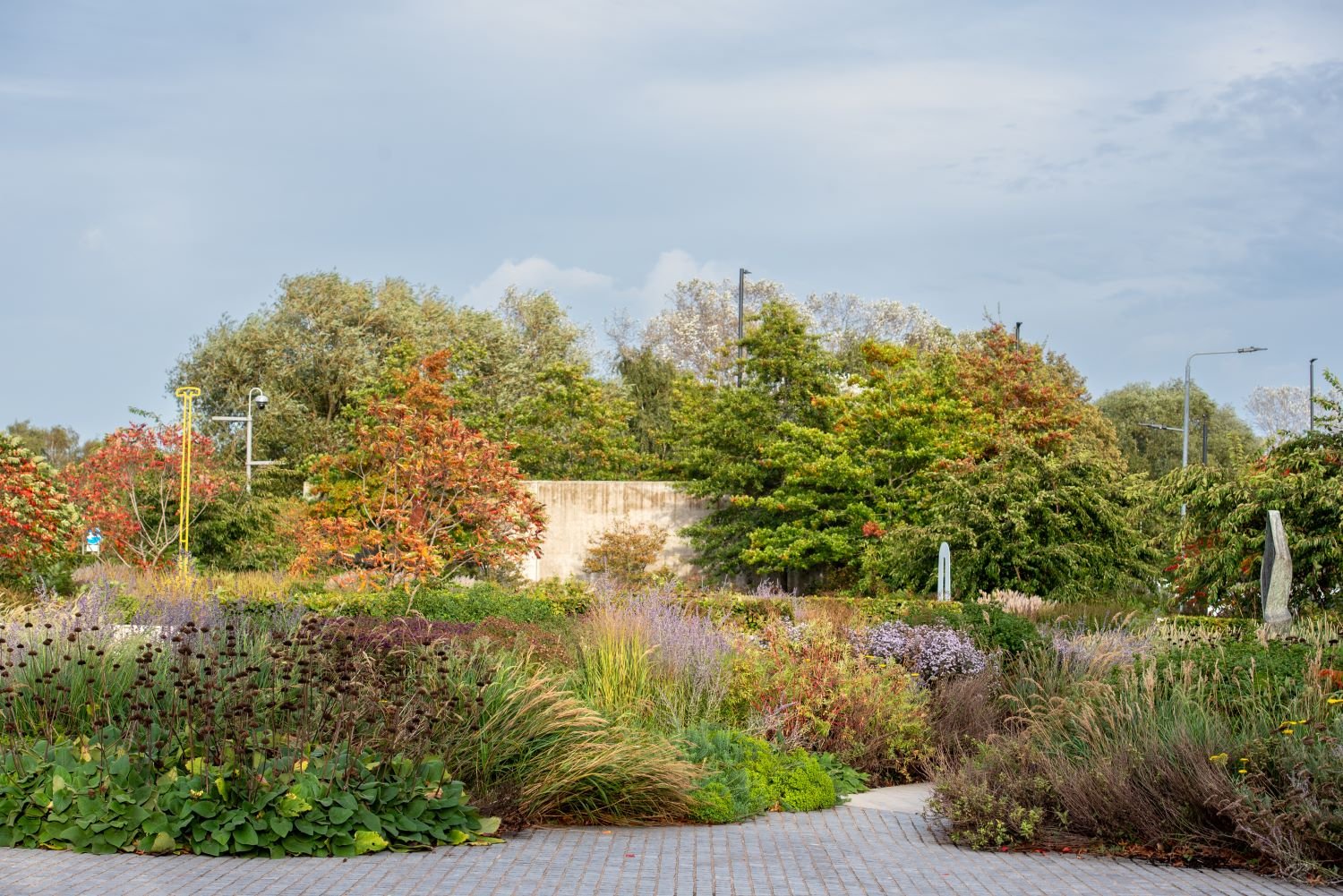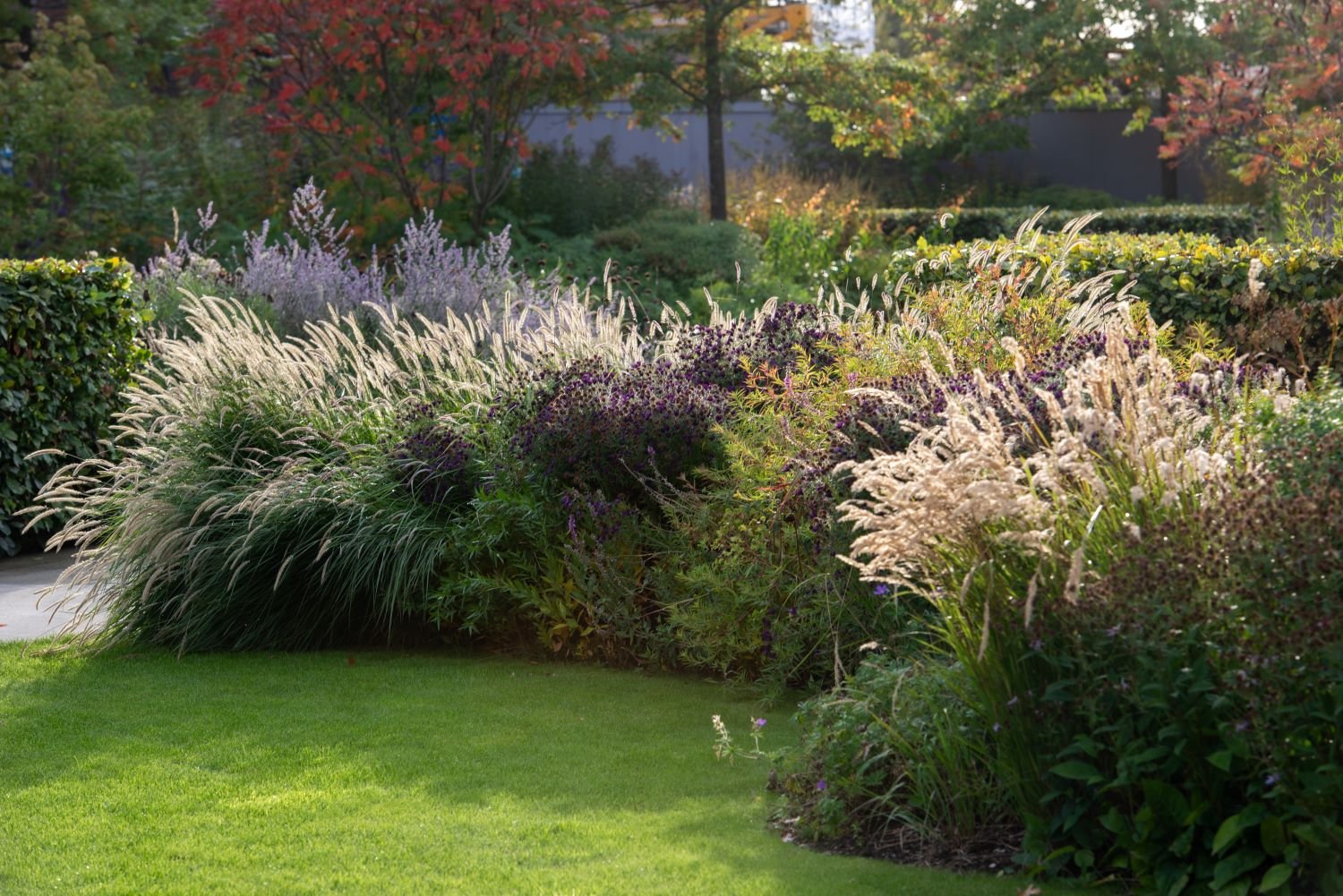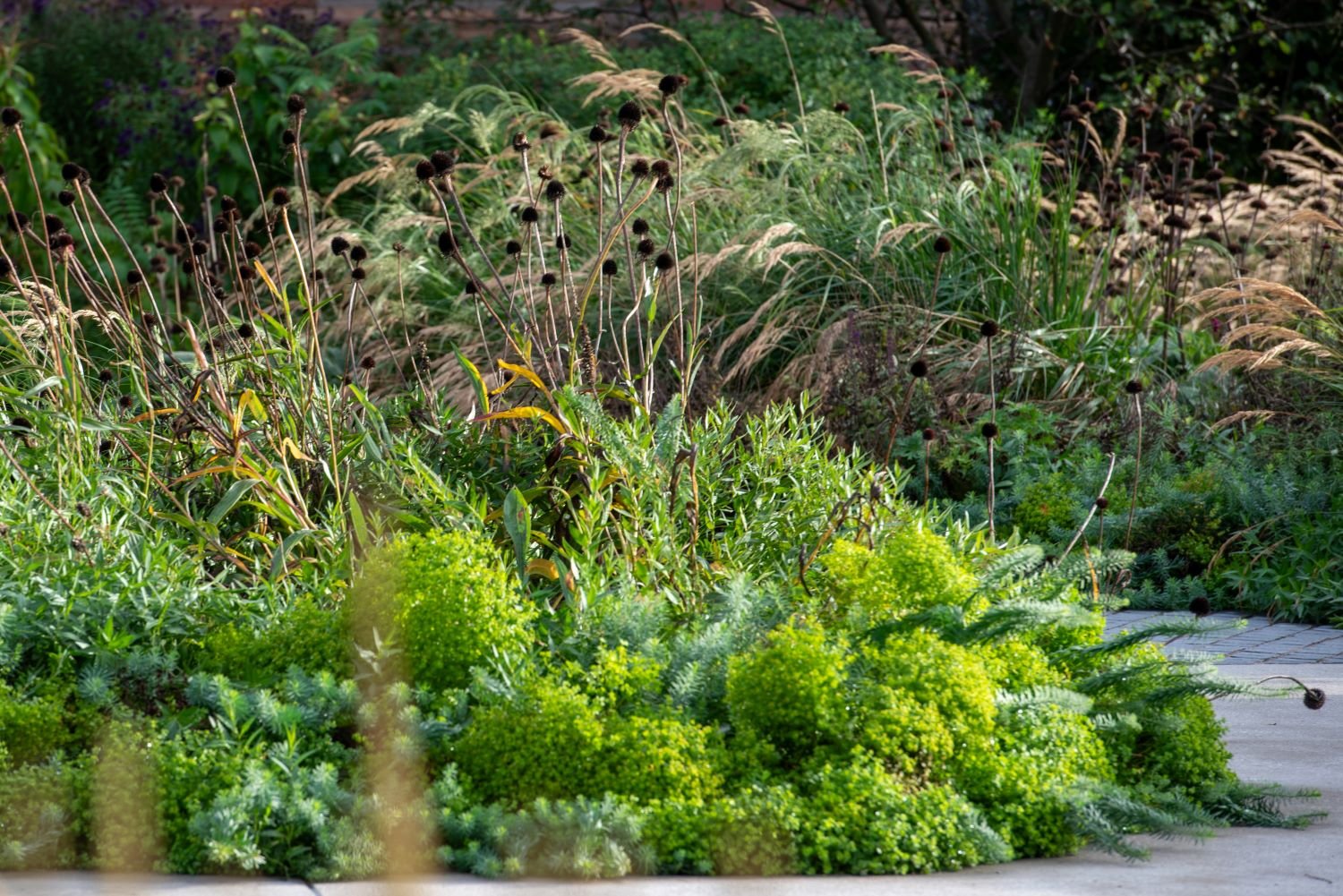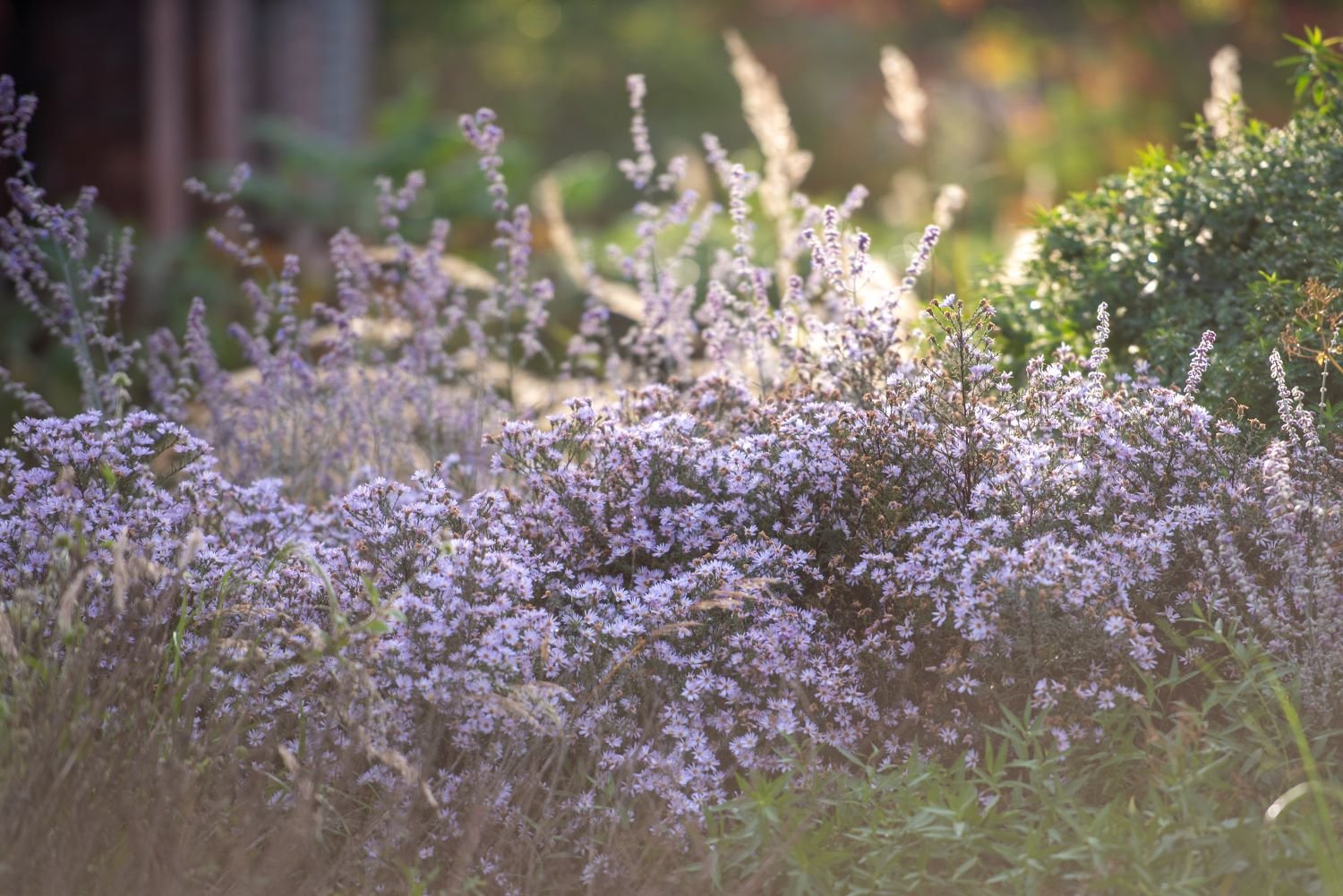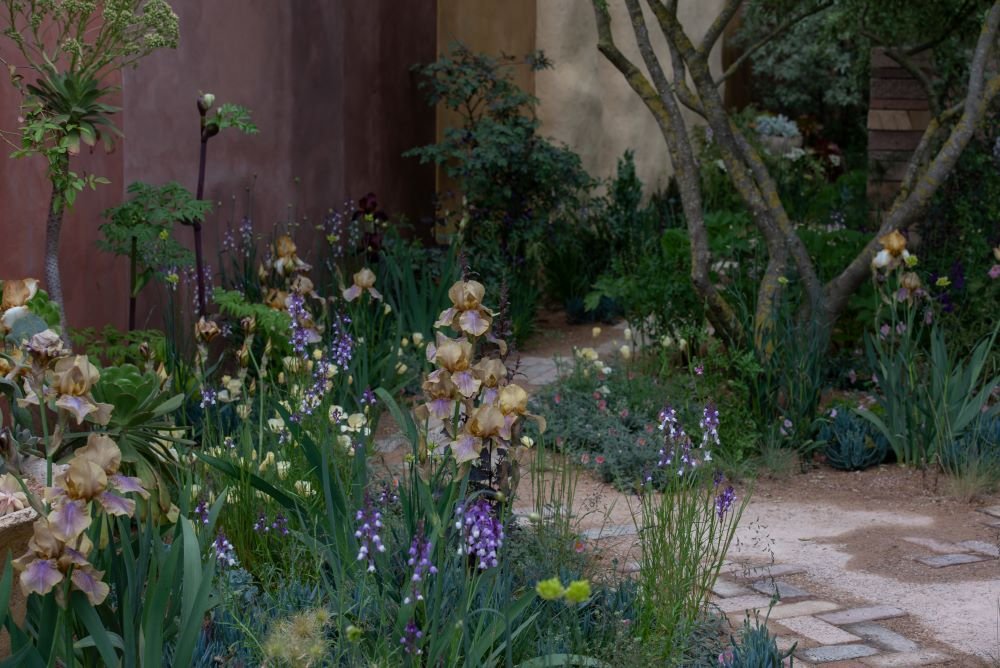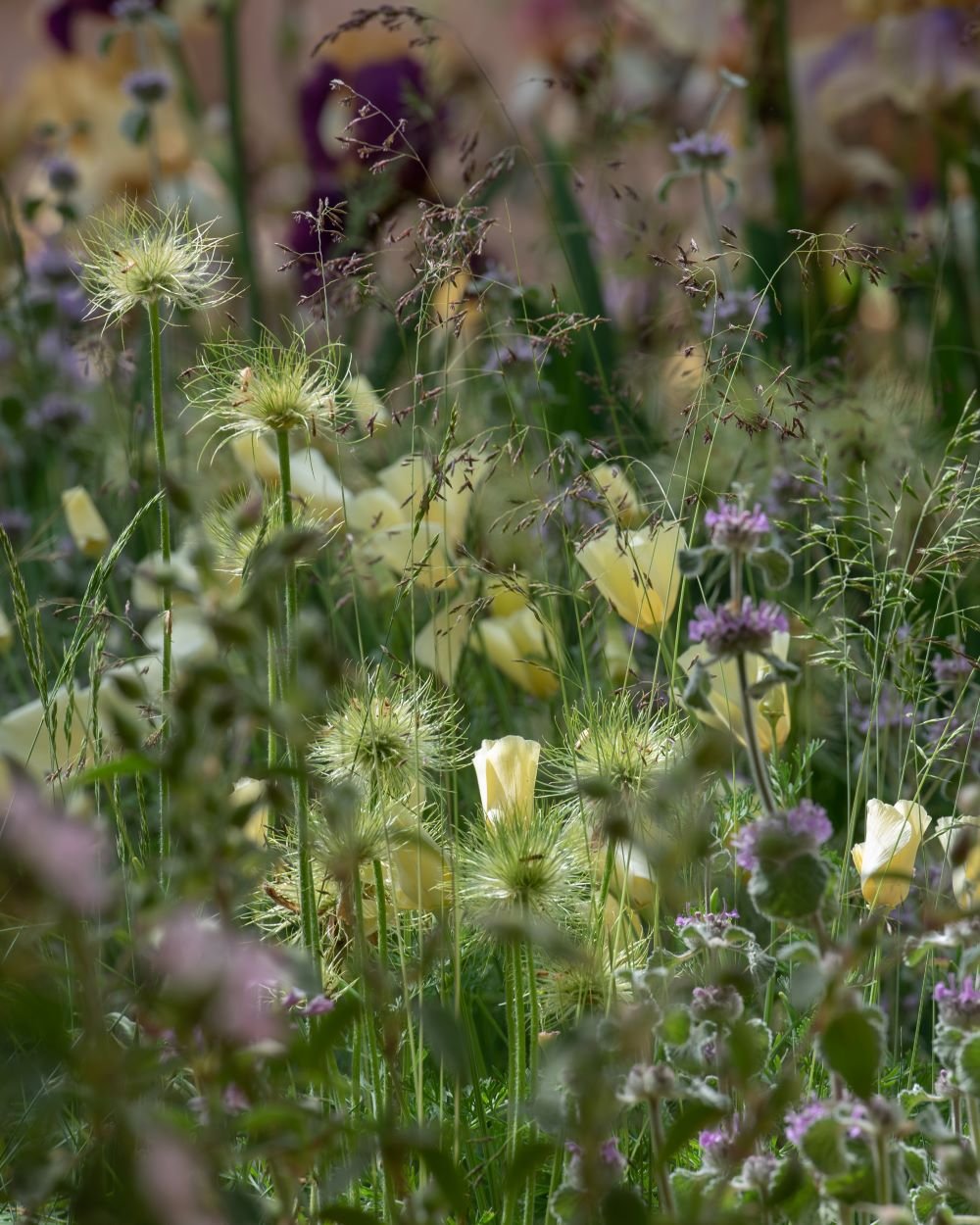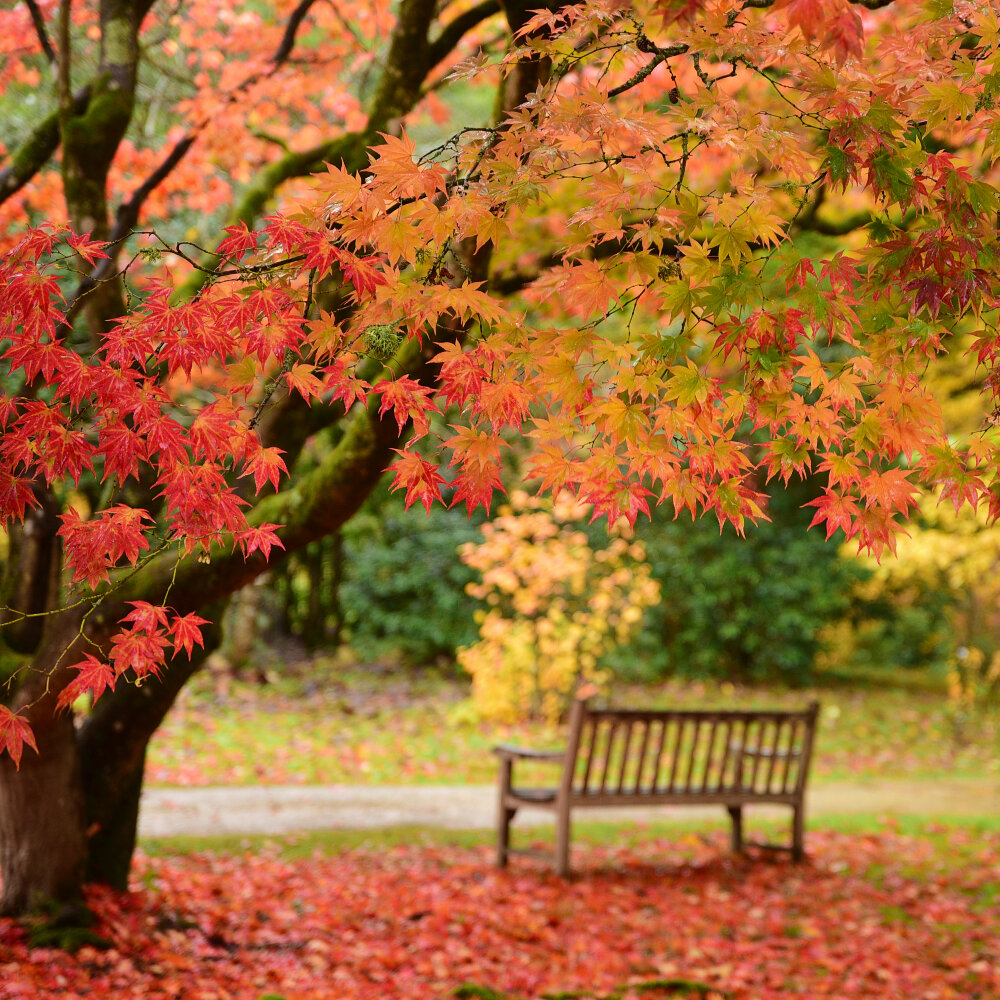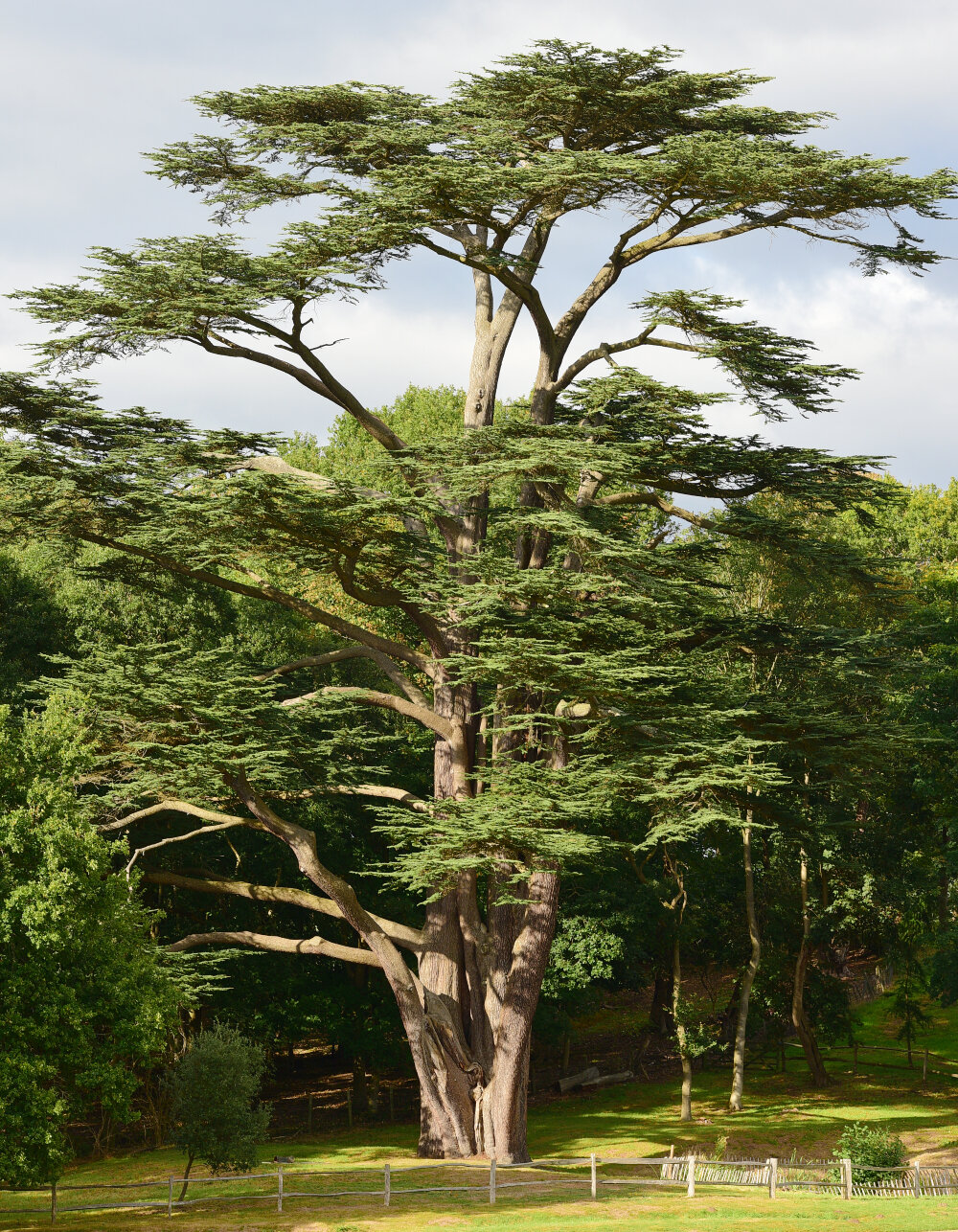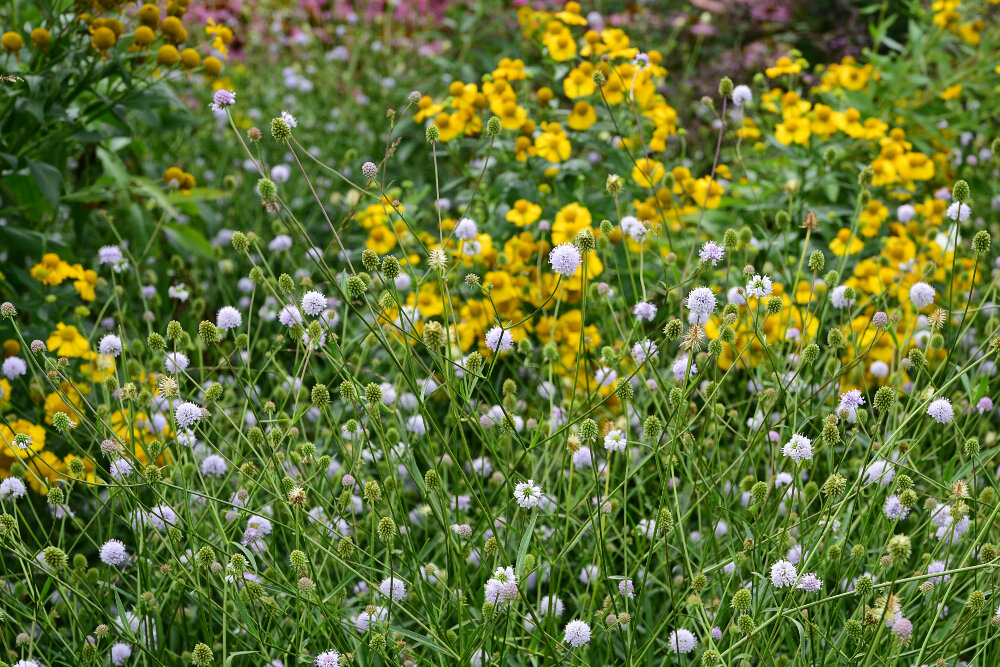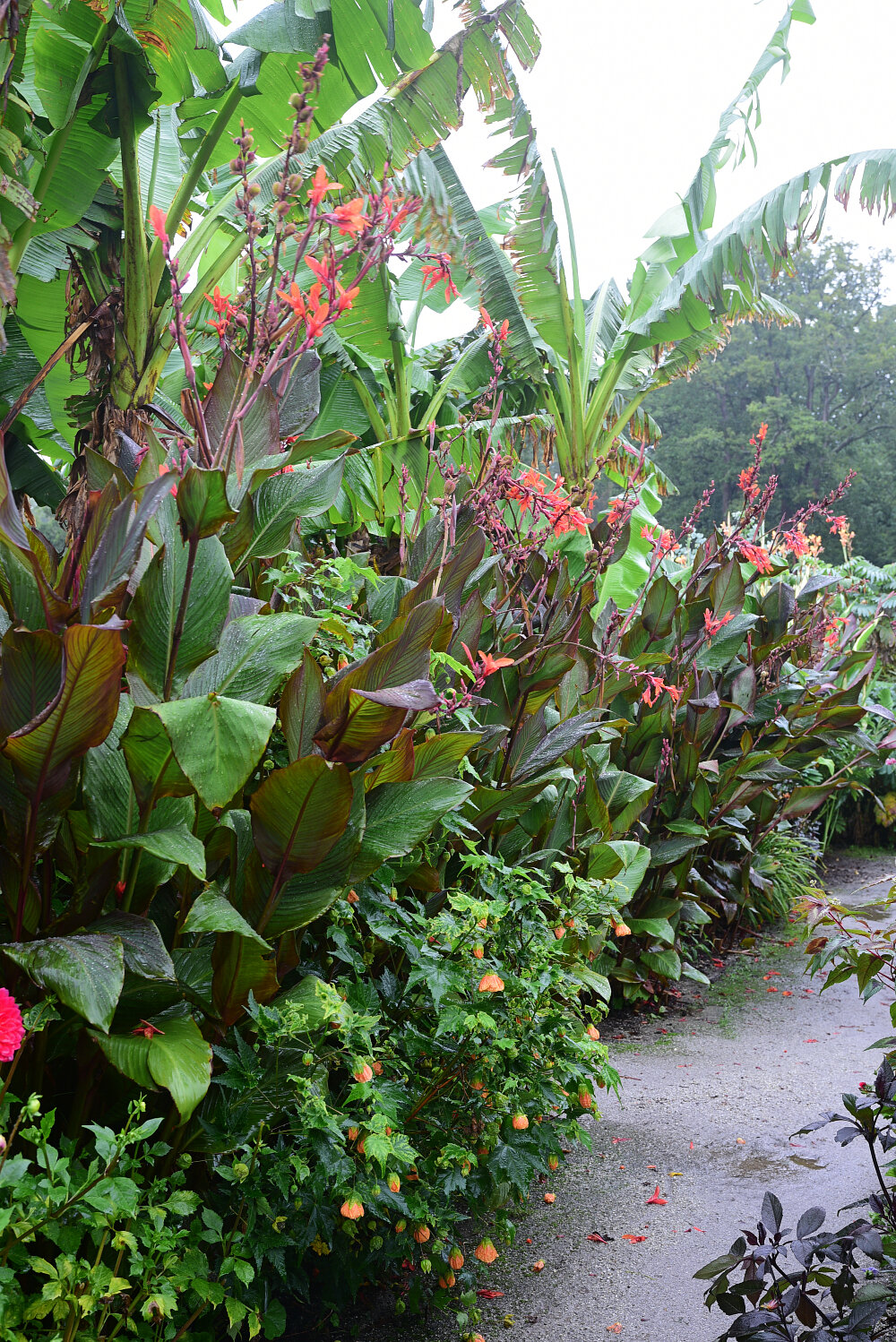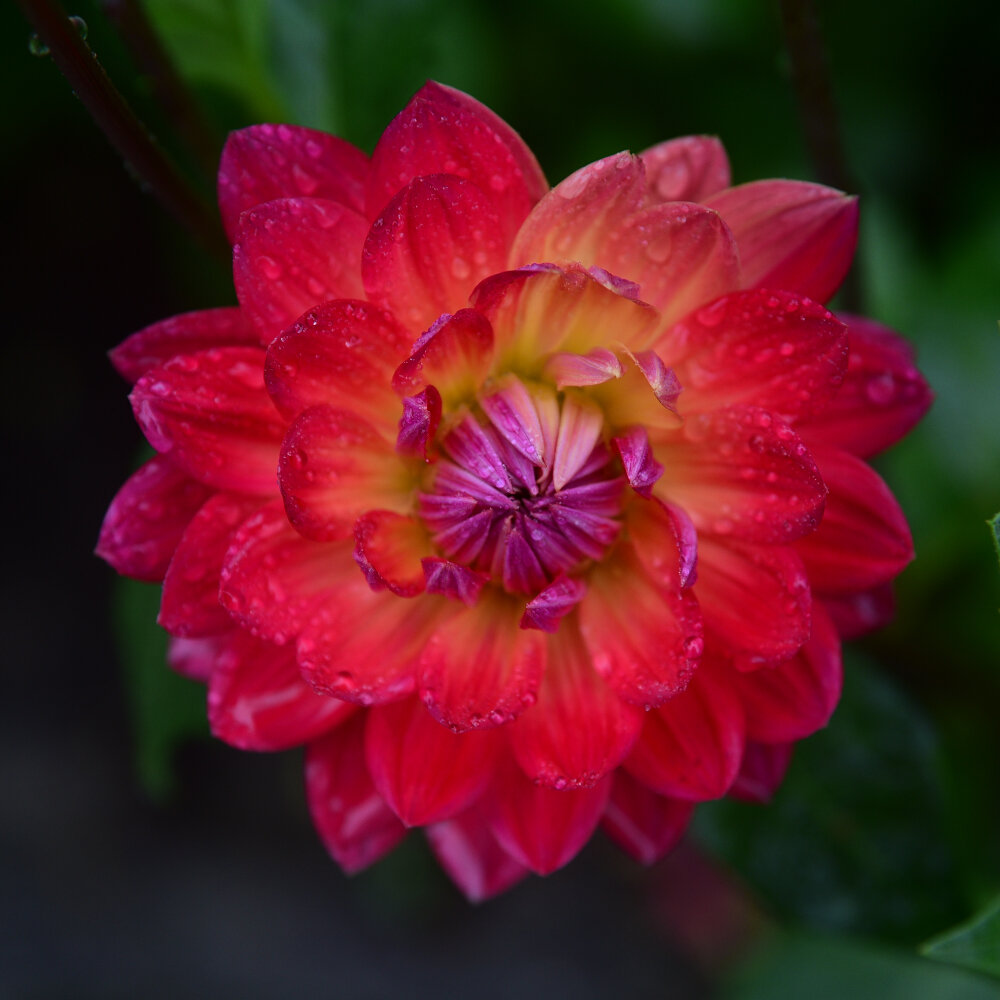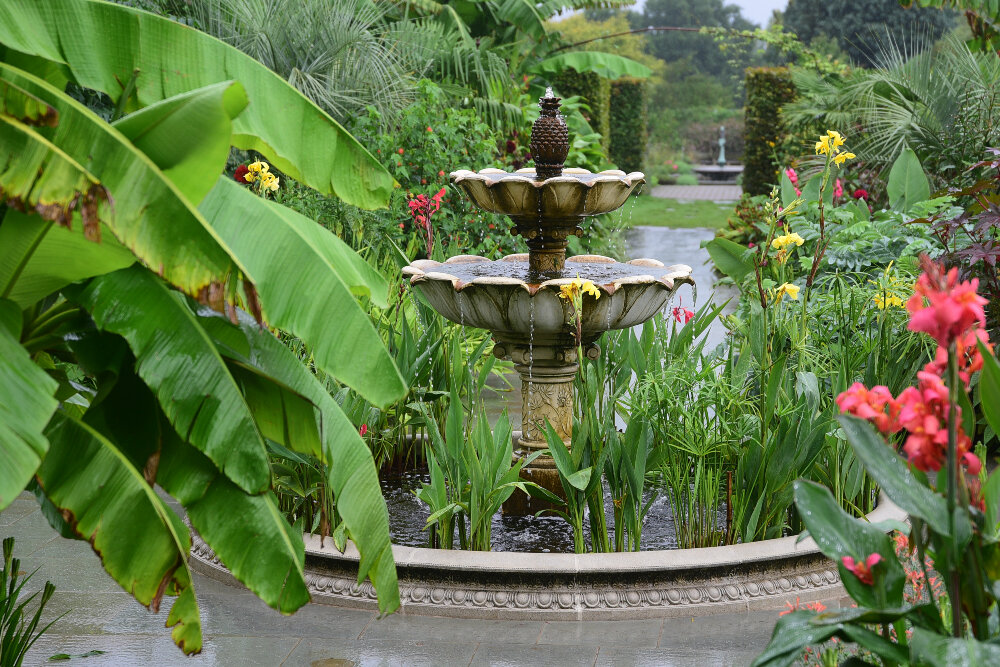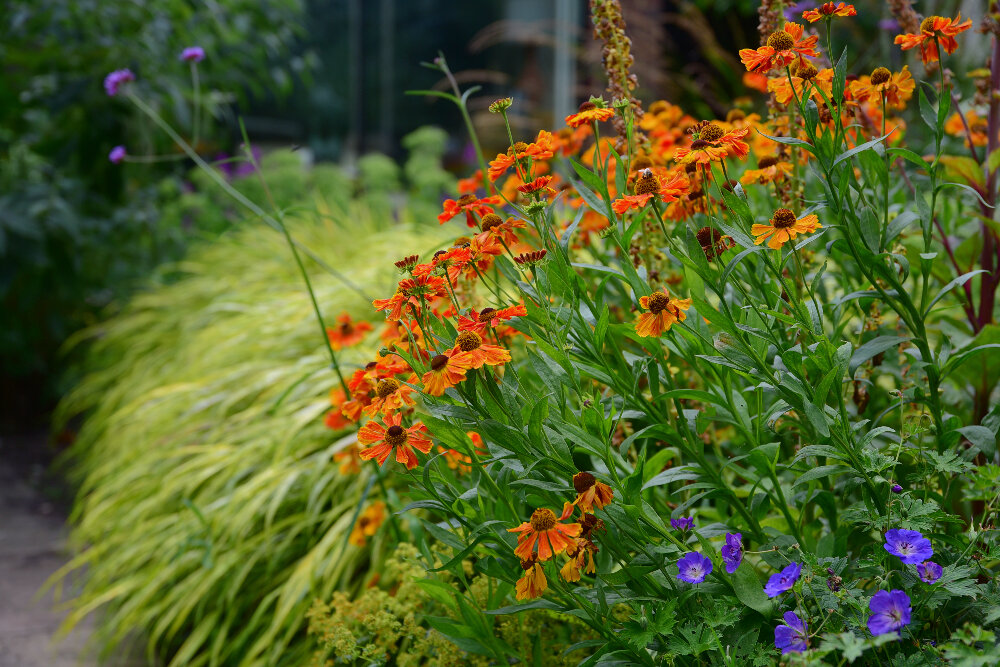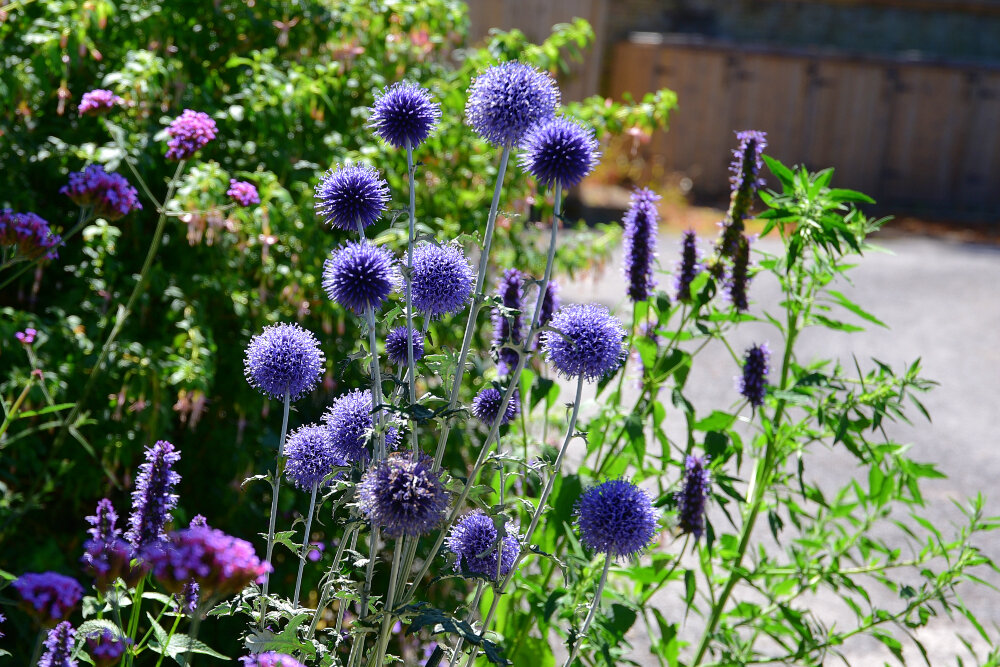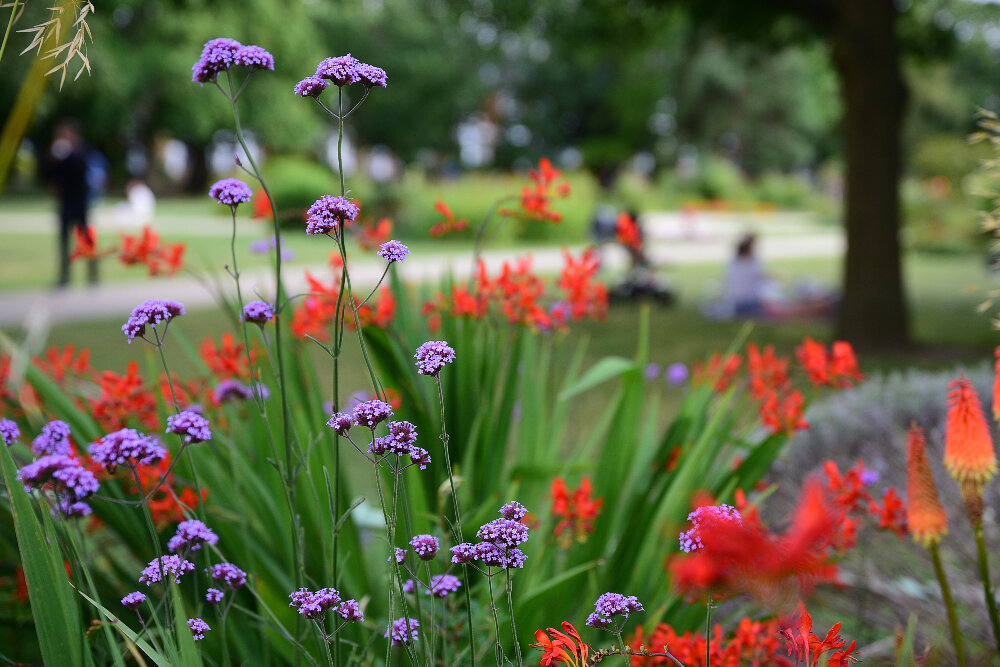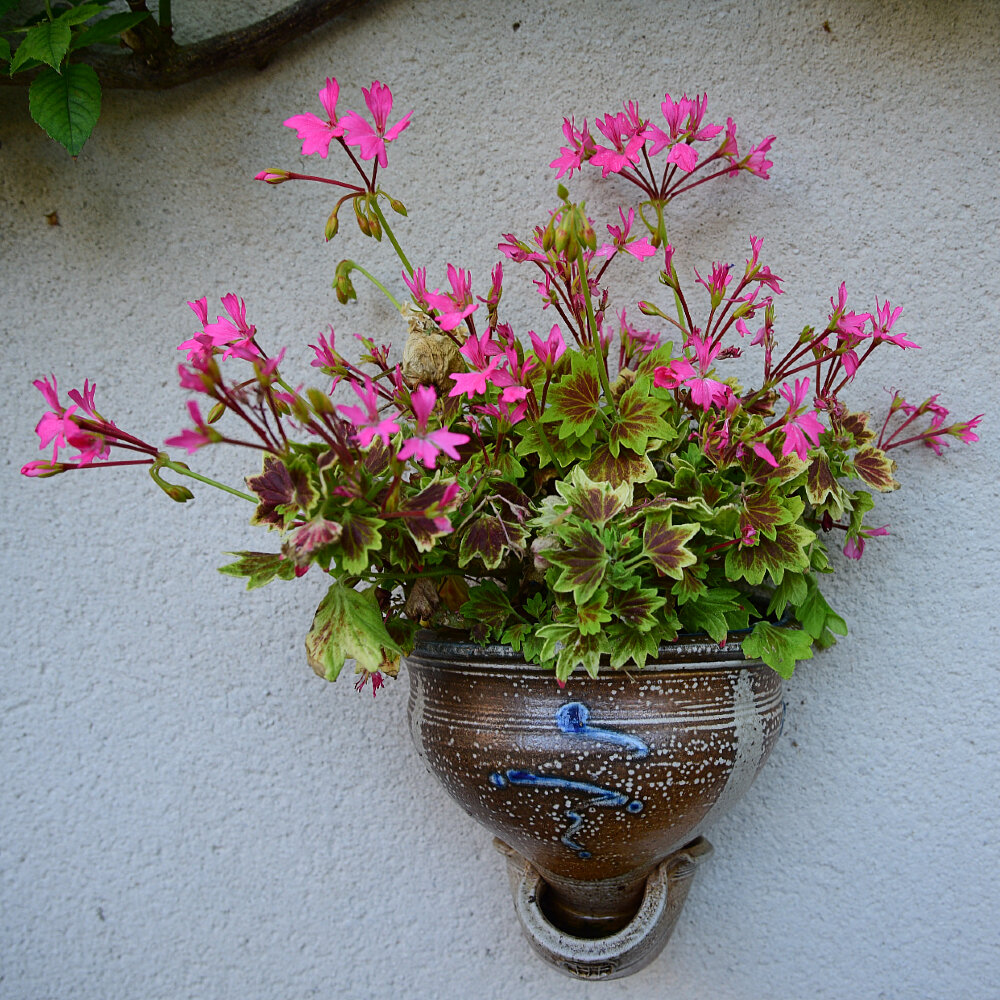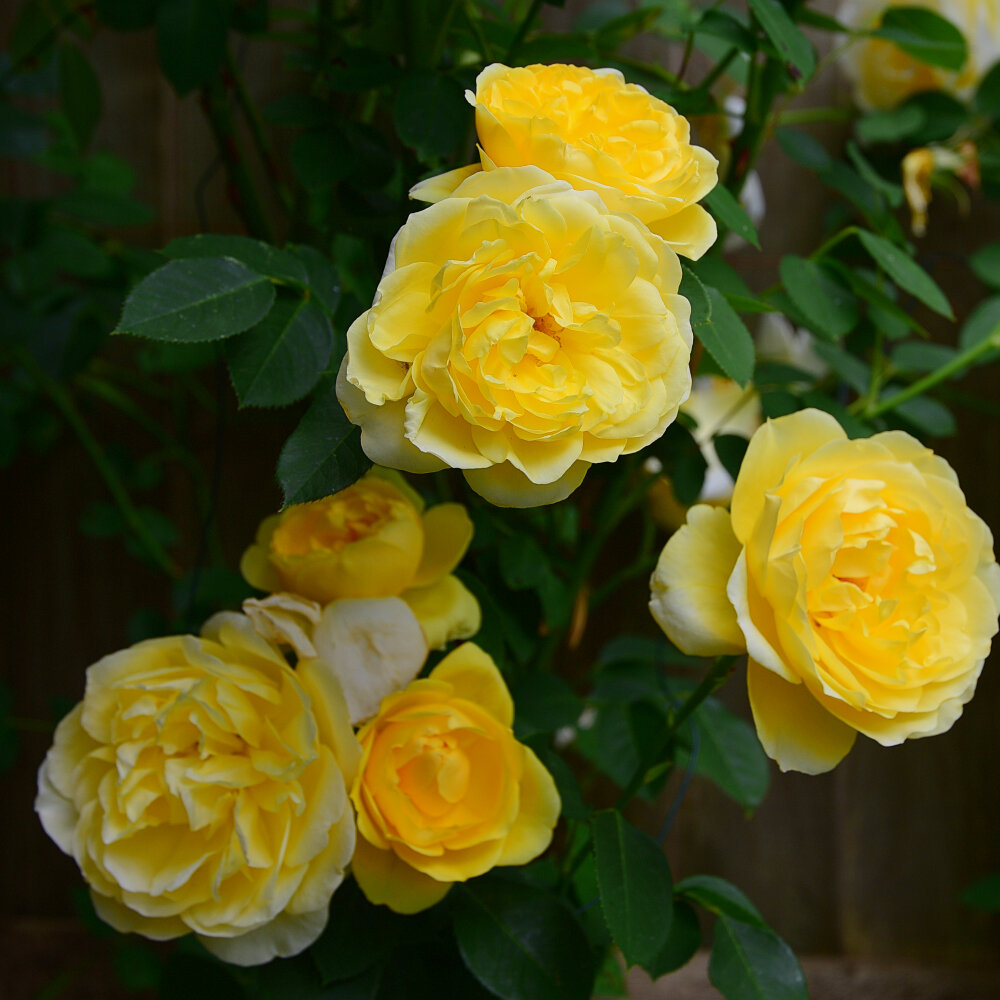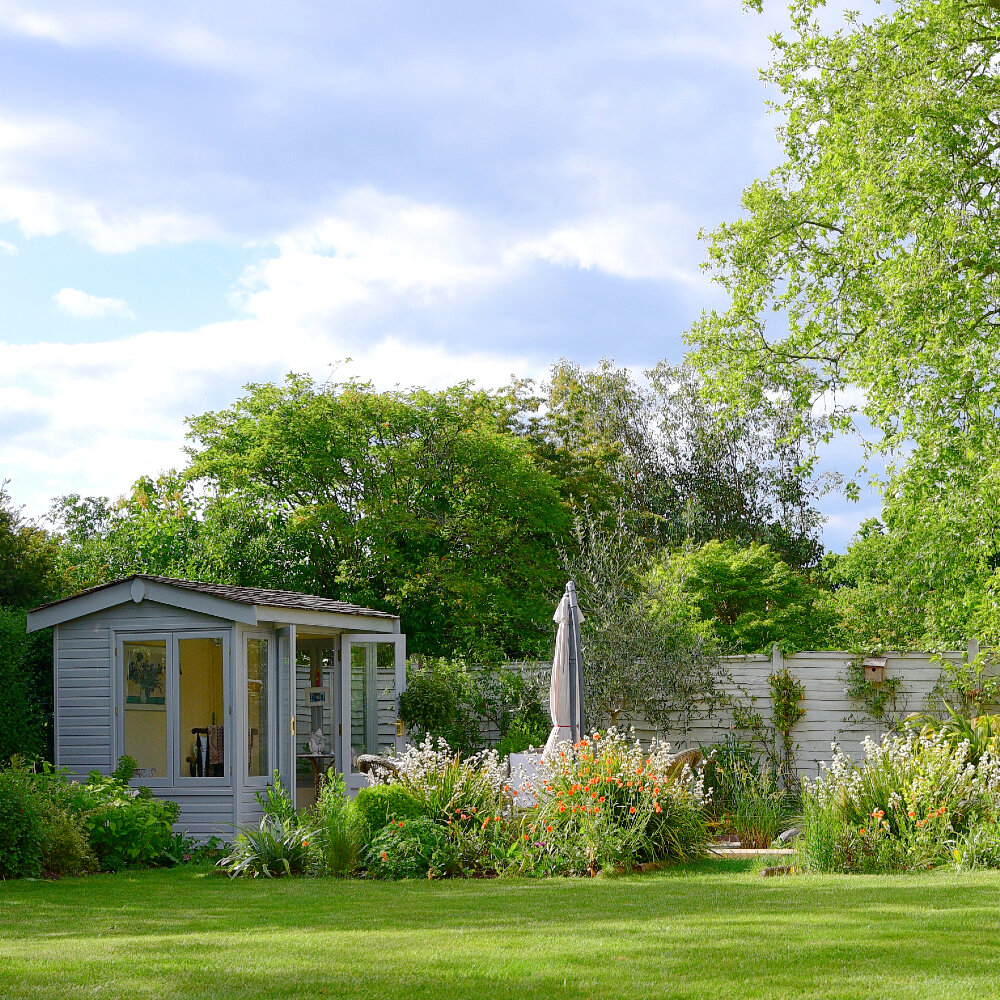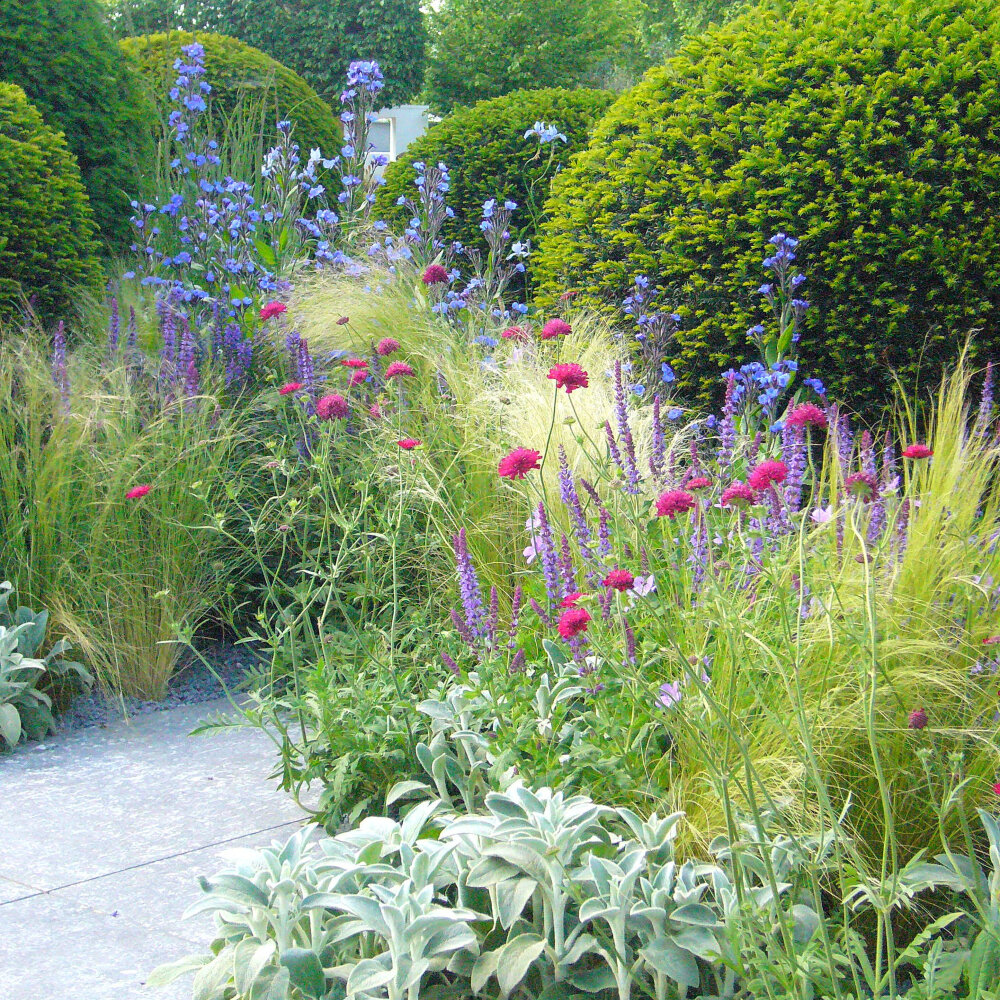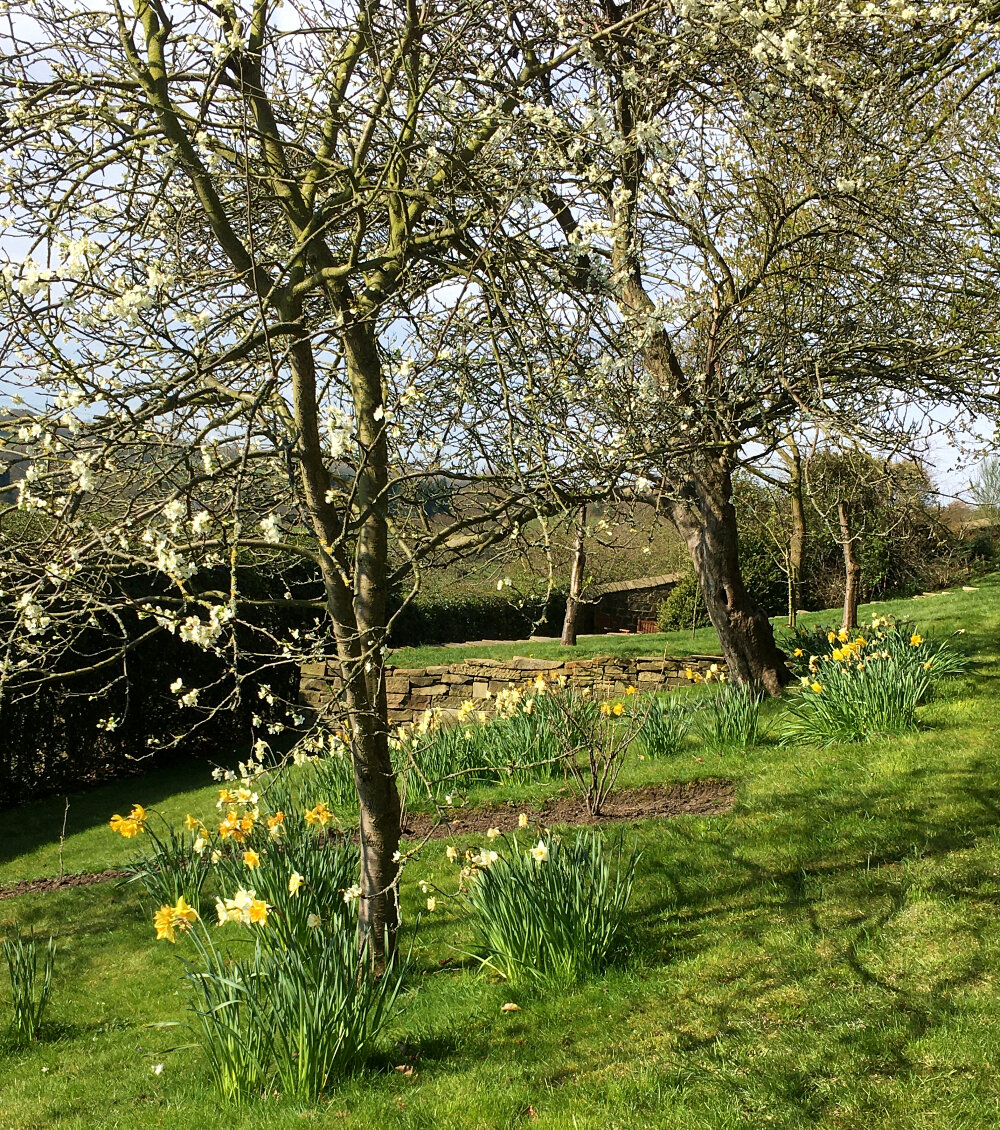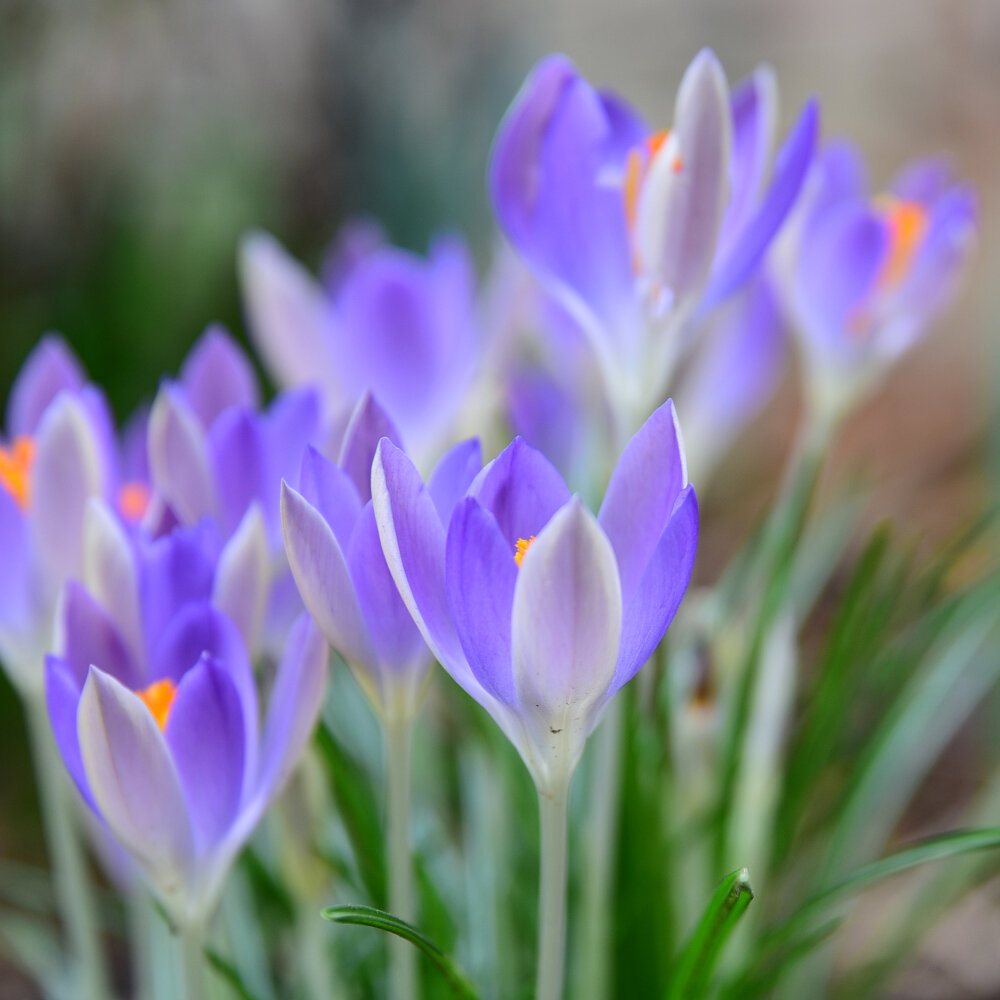My top ten garden books
It’s winter. I’m not a great one for curling up by the fire with a seed catalogue. They’re usually very wordy, short on pictures, with anodine sowing and cultivation notes. A book about gardens, or plants, plant hunting or gardening however, is much more cup of tea. But so much depends on the author and, naturally, the photographer.
First off, the books I use the most for my work. No, they are not technical tomes about soil composition of how to haunch the edge of a patio, but primarily books about plants.
The most thumbed book on my whole bookshelf is Right Plant Right Place by the late Nicola Ferguson. The phrase was first coined by Beth Chatto, if you plant something in the best possible position for it it (almost) can’t fail. And the most referred to chapters are those about planting in shade. London gardens are notoriously shady, be they in the shadow of tall buildings, neighbours’ trees or even their own fences. Every garden has got a slightly unloved corner where it would seem almost nothing will thrive. Beth Chatto might have had the number on planting under trees in her Woodland Garden book, but Nicola trumps her when it comes to dry shade and dense shade. Other valuable chapters are on plants for heavy clay soils and long flowering perennials.
Once I’ve made a selection for a garden I like to have a quick look at Christopher Lloyd’s Garden Flowers. No glamorous photos here but at times quite a witty take, and 70+ years of experience, on the delights or failings of many popular garden flowers. Recently, in looking for spring bulbs for a client I came across his description of Camassia quamash, “whose Indian (native American) name, quamash, indicates their edibility with its onomatopoeic, scrunching sound.” He admits to making that up but thought it should be true. Not that I agree with him all the time, one of my favourite flowers, the bright blue Catananche caerulea, is described as “a mildy pleasing but second-rate plant.”
The third of this trio of reference books is Barchams Time for Trees. Barchams is the tree supplier to the King, and the Queen before him. Obviously there’s some self-interest in this book and I was given it for free at a trade fair. However, it has lots of photos and good descriptions of hundreds of garden trees. It is particularly good at describing many different culitvars, I can’t tell you how useful this is when eyeing up several different varieties of cherries or magnolias say. It’s much easier to compare and contrast with a book than it is online.
Now for a bit of garden writing. I’m reminded of the quote that “writing about music is like dancing about architecture” and so how can writing really convey to the reader anything about a garden? The answer is, in the way that detective novels are fascinating but do not reveal the true awfulness of a murder, garden writing is enjoyable without actually having to get dirty or cold and wet or do your back in or weed that border for the nth time … Here are three that I’ve really enjoyed.
Back in the day when people actually wrote letters, and complete sentences, Christopher Lloyd and Beth Chatto enjoyed a very lengthy correspondence. Subjects ranged from writing about their own gardens, each other’s gardens, lots of other gardens, lots of (to my mind) unfathomable advice and there’s some terrific name-dropping thrown in too. The resultant book, Dear Friend and Gardener, is so good I’ve got two copies.
Sadly it seems most of the writers featured so far are no longer with us. Both Christopher Lloyd and Beth Chatto lived to ripe old ages at least, proving that gardening is indeed good for you. Elspeth Thompson, in the ordinary course of events should still be alive, but she suffered from depression and took her own life at the age of 49. Gardens can’t heal all it seems. She left two books, the first of which is The Urban Gardener, three years of Telegraph columns about the trials and triumphs in her garden and allotment in inner city London.
This brings me to my third choice for garden writing, Sue Stuart-Smith’s The Well-Gardened Mind. Sue is married to the Tom Suart-Smith (more of him later) and is a psychiatrist. In an age of well-ness, biophilia and other 21st century tropes, here is an evidence-led exploration of not only why gardening is good for you, but how gardening is good for you. Thankfully this is not a self-help book but is rewarding and uplifting with lots of case studies.
The final group of books are ones I turn to in need of inspiration or just a dose of garden porn if you like. None of these bears any relation to either my own garden or indeed the suburban gardens I design. I can but dream…
First up, Tom Stuart-Smith’s Drawn from the Land. Beautiful gardens and beautiful photography. The gardens range from award winners at the Chelsea Flower Show, London courtyards, country house gardens, a Moroccan paradise garden, arid Mediterranean hillsides and many gardens open to the public. I’ve been lucky enough to see a few of these in the flesh and he never disappoints.
Another monograph I’ve enjoyed is The Gardens of Arne Maynard. Much more associated, in my mind at least, with the gardens of ancient houses and landscapes. Unashamedly romantic and definitely not low maintenance, he particularly favours old fashioned roses, topiary and often features bucolic kitchen gardens. I’ve also seen a couple of his gardens, including his own in Monmouthshire which is one of my favourites. The photography, mostly by William Collinson, is lovely.
This next one is a bit left field and never in my wildest dreams would I ever be asked to design anything in this sort of landscape, let alone with this level of style and minimalism. The Desert Gardens of Steve Martino are designed and built in the semi-desert-like region of south-western USA. An early pioneer in the use of native plants adapted to the arid landscapes which are sometimes subject to heavy downpours, his gardens use walls to construct views and create privacy to making beautiful minimlaist outdoor rooms. If you want to see gardens which are the complete opposite of, say, Arne Maynard, this is the designer to look at. Fabulous photography by Steve Gunther.
My last choice, published earlier this year, is Wonderlands. Written by Claire Coulson and photographed by Eva Nemeth, it is an exploration of the gardens of some well-known and not so well-known British garden designers. I was in two minds about including this book as mostly I feel deep seated envy when I look at this book. Included are the gardens of Tom Stuart-Smith and Arne Maynard. Interestingly, few of these designers admit to having any plans for their own gardens. They’ve taken a more experimental and leisurely approach, unpressured by a deadline or a budget or a client brief. Even so, there are deep echoes of their professional work in their own gardens.
Nymans
I think Nymans might be the first National Trust property I’ve been to where its all about the garden rather than the house. The garden is grade II listed, and the house is mostly a ruin.
View of the house from the South African bed
The 600 acre Nymans estate was bought by German emigre Ludwig Messel in 1879 and was occupied by his descendants, even after the devastating 1947 fire. It was handed over to the National Trust in 1953.
The summer borders
Unlike many houses devastated by fire this one has been left standing. It’s been cleverly planted with architectural and evergreen plants lending it the air of a gothic folly.
Architectural and evergreen exotic planting
If you go on the walking tour they will take you into a newly planted part of the great hall. It references Oliver Messel, the theatrical designer and Ludwig’s grandson, with corten screens and architectural planting, all in containers.
Tetrapanax, Cordyline and Wisteria
Yew topiary againt the house
The Forecourt Garden in front of the house is planted with topiary and naturalistic looking borders. In one corner is an attractive stone dovecote.
Achillea and scabious in the Forecourt Garden
Naturalistic planting in the Forecourt Garden
Topiary in the Forecourt Garden
The Dovecote
Ludwig Messell and his head gardener, James Comber, were avid plant collectors and breeders. The garden hosts many plants from the southern hemisphere, notably from Chile and Argentina. A large part of the garden is dedicated to plants from South Africa such as Dierama, Kniphofica, Berkheya, Watsonia and several Restios.
Berkheya and Dierama in the South African bed
The Rock Garden
The Rock Garden and lookout
The Rock Garden is a bit more rock star than your average 1970s effort, not least because of its scale. Aside from the expected heathers (many different varieties) but many Mediterranean plants like Santolina, Phlomis and the odd Trachycarpus thrown in for good measure.
The Rock Garden and Croquet Lawn
This is one of the very few National Trust gardens that I have really enjoyed. It is definitely worth another visit to see the Rose Garden, wildflower meadows, Wild Garden and the Wall Garden, all a bit earlier in the summer. The Pinetum is a really good example of its kind as well.
There are lots of opportunities for refreshments if you are not bringing your own picnic. I’d say it is one of the better NT cafes as well. Oh and there’s an excellent secondhand bookshop, definitely worth a look.
Le Chateau du Lude
On a short holiday in the Loire region of France I convinced myself there must still be a hidden gem of a garden that I hadn’t visited.
Le Chateua du Lude
Having done Villandry, Chaumont and Chenonceau I had to travel north to the banks of the other Loire valley river, Le Loir, and Le Chateau Du Lude.
Rose Garden
Le Lude is the most northerly château of the Loire Valley and has been inhabited by the same family for the last 260 years. The gardens have evolved to combine French design and an English-style landscape, with a rose garden, topiary, a labyrinth and a botanical walk. And an unpublicised organic kitchen garden.
Lower Garden
The lower garden running along the river, was the original vegetable garden. This was moved further away to create a romantic French-style garden designed by Edouard André a renowned landscaper in the 19th century. Parterres of flowers and ponds succeed each other, with scented flowering shrubs like chimonanthus, lilac, philadelphus and calycanthus along the wall.
The fields opposite were planted as a landscape park.
Lily pond in Lower Garden
The spring garden is full of early perennials but these were mostly over at the time of my visit in June.
Fountain in Lower Garden
Le Loir from under a copper beech
So far, so French. Not too much in the way of flowers or colour after the slightly past-it rose garden. And then I noted there was a kitchen garden.
The Kitchen Garden
It was midday as I arrived as the gardener was locking the gates to the obviously “prive” kitchen garden. Somewhat crestfallen I mustered a smattering of pidgin French to explain I was a garden designer and just wanted some photos. Eager to get to his lunch he opened the gate for me and asked me to lock it when I was finshed. I can’t imagine the National Trust doing that.
A mixture of flowers and fruit and weeds, well it is organic..
Fruit trees in the Kitchen Garden
Sisyrinchium striatum, phlox and California poppies
Orangery, used as a tool store
The Kitchen Garden was the most floriferous part of the gardens, the informality of the planting here is in stark contrast to the more formal areas elsewhere.
Birdbox in the kitchen garden
I would say the garden at Le Chateau du Lude wasn’t quite the hidden gem I was hoping for. Having said that I spent a pleasant couple of hours here. It’s not as busy as all the better known gardens in the Loire and I was grateful for that. There are no refreshments available so you’ll need to bring your own. And, of course, it’s not open at lunchtime…
Website https://www.lelude.com/en/
Project Giving Back - Chelsea 2024
In any other year a damp, grey day at the Chelsea Flower Show would have been unusual, not in 2024 though. Whilst most humans aren’t that happy in the rain, gardens absolutely love it. Colours are more vibrant and plants look much fresher.
The Octavia Hill Garden by Blue Diamond with the National Trust
In recent years there have been far fewer large show gardens on the main avenue, and now all are sponsored by charities rather than big corporates. This is in no small part as a result of Project Giving Back.
The WaterAid Garden
“Project Giving Back is the vision of two private individuals who want to support a wide range of charitable causes whose work suffered during the global Covid-19 pandemic and continues to be affected by the economic downturn and cost-of-living crisis.
World Child Cancer’s Nurturing Garden
The grant-making scheme gives UK-based charities and other charitable organisations the chance to apply for a fully-funded garden at the RHS Chelsea Flower Show, subject to the usual RHS selection process. This is a unique opportunity for charities to raise awareness of and support for their work at the world’s most famous horticultural event.”
Muscular Dystrophy Garden
The first Chelsea Flower Show to benefit was in 2022, and 12 gardens were supported. The most well-known of these was the best in show garden by Lulu Urquart and Adam Guinness - remember the controversial re-wilded garden for beavers?
The National Garden Scheme Garden
Most of the plants from this garden (there wasn’t a lot of hard landscaping) went to the Lindengate garden in Wendover, Buckinghamshire. This mental health charity uses its six acre garden to provide social and therapeutic horticulture to people of all ages.
Terrence Higgins Trust Bridge to 2030
A further 15 gardens were supported in 2023, including another best in show winner, Horatio’s Garden, designed by Charlotte Harris and Hugo Bugg.
St James’s Picadilly: Imagine the world to be different
Horatio’s Garden is a charity set up to provide gardens for people with spinal injuries and the show garden has gone to the Princess Royal Spinal Cord Injuries Centre in Sheffield, opening later this year.
The Anywhere Courtyard
In 2024 another 15 gardens were supported, including yet another best in show garden, the Muscular Dystrophy forest bathing garden designed by Ula Maria. This garden will be relocated to The Prince & Princess of Wales Hospice in Glasgow.
mgr Changing Tides Garden
It’s quite a complicated process moving a show garden to its final home. Inevitably there is an element of redesign to fit the new space and in the meantime both the hard landscaping materials and plants may have to be stored before they can be re-used. Some new elements may be incorporated as Chelsea Show gardens are for May, not really for 12 months of the year.
Stroke Association’s Garden for Recovery
Project Giving Back is scheduled to continue for a further two years. It’s a good fit with the RHS’s ethos of sustainability and trying to keep the Chelsea Flower Show as green as possible.
Sue Ryder Grief Kind Garden
Project Giving Back also provides support for garden designers, helping those with a good idea find a charitable partner to link up with, and it also helps newer designers get into Chelsea for the first time.
Bowel Research UK Microbiome Garden
All good things usually come to an end though, so how will the RHS find sponsors with pockets deep enough for a £250,000 show garden once Project Giving Back ends after 2026?
RHS Harlow Carr
A visit to Yorkshire to see friends meant a long-awaited trip to the RHS garden at Harlow Carr.
Harlow Carr
It’s a much more compact garden than Wisley, making it much easier to get around and see almost all of it. The garden was looking pretty good in the very bright and low autumn sunshine (not ideal for photography). It was a bit too early for good autumn colour in the arboretum but there was plenty going on elsewhere.
Aconitum
The long herbaceous borders were still looking colourful. I expect the very warm September had a lot to with extending the season.
Verbena bonariensis, Rudbeckia and Kniphofia
Persicaria
There’s a small stream running through the gardens and just uphill from this is a more traditional mix of shrubs, small trees and perennials, all looking great when back-lit with the low sun.
Hakonechloa macra
Astrantia major
Dawn redwood
Eryngium seedheads
Sidalcea
One of the things that surprised me and my southern view up gardening up north is how successful the salvias were. The gardens seem to showcase a lot of different varieties, from the stauesque Salvia Amistad and S. guaranitica Black and Blue, to the more shrubby Salvias such as Hotlips, Nachtvlinder and others I did not recognise. Who knew thse natives of the Americas, thought to be tender and prone to frost could thrive in this environment?
Salvia guaranitica Black and Blue
Shrubby Salvias
There was also a tropical garden, full of bananas, the regular Musa basjoo and the Ethiopian variety Ensete ventricosum. Admittedly these were accompanied by many coloured foliage plants like Coleus and the autumn colour of Cercis and Dogwoods. My friends are tasked with finding out if the bananas are left in all winter.
Tropical garden
Towards the lowest point of the gardens there is what looks like a white border. In autumn the grasses are the highlight, but I would like to see it when more of the perennials are in flower. The only flower on show in October was this stately Leucanthemum.
Leucanthemum in the white border
Harlow Carr is just outside Harrogate so it is no surpise to find all the catering is provided by Bettys. The queues are long so take a flask or do as I did, and get a friend to wait in line (thanks Rachel…).
Autumn colour
Harlow Carr - the gardens are open every day except Christmas Day
Bettys - they say there’s no need to book for the tea rooms but the long queues suggest otherwise…
The Hepworth Wakefield Garden
I was not overly hopeful of enjoying the Hepworth Wakefield Garden. Often gardens that seem good looking on social media are somewhat disappointing in real life. And the long journey up the M1 had been dreary and wet, compounding my low expectations.
The Hepworth Wakefield Garden
So it was a really pleasant surprise to find that it was all it was cracked up to be and, not only that, the sun came out just as I arrived.
The garden was designed by Tom Stuart Smith and according to thee garden’s website the “design draws inspiration from its unusual setting between 19th-century red-brick mills and a 21st-century art gallery. It echos the striking, angular shapes of the David Chipperfield-designed gallery while harnessing a naturalism that reflects Barbara Hepworth’s deep connection to the landscape.”
Rhus typhina and Aconitum
Construction began in 2019 and is planted with 14,000 perennials, 120 metres of beech hedge, 52 trees and shrubs and 60,000 bulbs.
Rhus typhina and grasses
In autumn the main features of the garden are the brilliantly-leaved Rhus typhina, grasses and various asters, all looking really good backlit by low autumn sun. I can’t say that Rhus is a favourite plant of mine, it has a tendency to sucker and spread, but in autumn the colour is hard to beat.
Rhus typhina
Phlomis russeliana seedheads
Asters and Echinacea seedheads
I sometimes find it hard to persuade clients that it’s worth planting for autumn colour and form. Despite the much-lauded value of grasses and seedheads it’s not until people see gardens like this in autumn that they become convinced.
Pennisetum and Salvia (formerly Perovskia) Little Spire
Back-lit grasses and asters
Euphorbia and Echinacea seedheads
More grasses and asters
One plant I was delighted and surprised to see in a public garden was the bright blue Aconitum. I’m not sure which variety it is but it’s stunning in the half shade under an oak tree. Most Aconitum are poisonous and although some have AGM status they should always be handled with care; ingesting even a small amount can make you seriously unwell and can cause death. Here it is placed well back in the border and does not overhang the lawn or paved areas.
Aconitum, to be handled with care…
There is a small cafe in the garden (closed when I was there) and a cafe inside the gallery. The garden is free to enter, though you do have to pay for parking close by on the other side of the River Calder.
Sculpture by Michael Craig-Martin
Long view
Fading into beautiful light
It was well-worth the long schlep up to Wakefield (on my way to meet up with friends really…) and proved every bit as good as it looks on Instagram - @katymerrington. It is beautifully maintained by cultural gardener Katy Merrington and a team of volunteers.
Chelsea 2023 - Sarah Price's Garden
It’s not often a show garden at Chelsea is universally popular. Despite being heavily featured on the tv coverage there were still gasps of delight and audible wows as visitors saw it for the first time.
And I think this is the first time I’ve showcased a single Chelsea garden, that’s how much I liked it.
Iris Benton Susan
The most striking thing about the garden when you see it for the first time is the amazing display of Benton irises. Cedric Morris was an artist and also bred irises ast his Suffolk home, Benton End. “Cedric Morris was famous for his flower paintings and iris still lifes. You can see that he really understood the plants, but he was also an incredible gardener, who influenced Beth Chatto. He introduced 90 different cultivars of bearded iris,” says Sarah.
Iris Benton Olive and Aeonium Zwartkopf
The irises, like the garden at Benton End, languished for many years. A former head gardener at Sissinghurst, Sarah Cook, began the long process of hunting them down and breeding them, a process which is now carried on by others.
Like all the gardens this one has had to prove its environmental credentials and the builders claim it has the lowest carbon footprint of any garden at the show. All the materials are found and/or recycled and much of the garden will be relocated back to Benton End at the end of the show.
Rosa x odora mutabilis
This garden is about much more than the irises however, It is also an evocation of the old garden at Benton End. Other plants such as the trees and grasses are designed to appear semi-wild. The colour palette of pink, blue and yellow is taken from two of Cedric Morris’s paintings (Cotyledon and Eggs, and The Eggs).
A couple of things really appealed to me: the overall colour palette which is muted but has depth too, and changes colour in different light; and the overall feeling of light and space. The only other garden which had this quality was the Transcendence garden by Andrew Wilson and Gareth McWilliam. Although there was lots to look at it didn’t feel busy or cramped, there was no need to fill every square inch of space with plants (or structures, or funiture or other stuff…).
Eschscholzia Californica Ivory Castle
Chelsea was as crowded as ever, if not more so. It’s not helped by the fact that some designers make it difficult to get a good view of their gardens, with everyone scrunched up into a few linear metres. Even Monty Don has said some of the gardens can only be viewed, and understood, from inside the garden. Some designers, in my opinion, are repeat offenders when it comes to not making their gardens fully viewable to the paying visitor. Come on RHS, please sort this out.
Yes, it’s still a good day out and just about worth the money, but it is becoming an endurance event.
West Green House Gardens
This is a garden I have visited many times and it never disappoints. The undoubted highlight of a spring visit is the mass display of tulips, principally in the walled garden.
The colour and form of the tulips is kalaidoscopic to say the least, but look closely and you’ll see there is definitely method in the seeming madness. Many of the tulips are sold by the Gardens, either as single varieties or in collections.
Despite many of the tulips being listed on the website it’s still quite hard to recognise them all.
Tulipa Violet Beauty
This is probably my favourite combination in the whole garden. It’s reminiscent of the Alice in Wonderland tea garden, although it is at the opposite end of the site.
Raspberry ripple tulips anyone?
Tulipa Rasta Parrot
In the vegetable garden the tulips are used as bedding plants. The painted plant supports add some colourful height.
At the farthest end of the garden a former topiary lawn has been replaced by this mass planting of tulips. The remaining box balls are a solid contrast to the flightiness of the tulips.
Not all of the garden is devoted to tulips in spring. The damper meadow areas are planted with narcissi and snake’s head fritillaries,.
The walled garden also contains a lot of box, outlining the formal beds and adding some height and structure. The box seems to be recovering well from box tree caterpillar.
The tea shop has two outdoor seating areas. This is my favourite, a sheltered spot with an Alice in Wonderland theme of red and white. Very nice tea and cake by the way.
Alice in Wonderland tea garden
Although this is a private garden you can enter for free with a National Trust membership card. You will have to pay £4 for parking unless you can find a spot on the road just outside the gardens.
I can’t recommend these gardens highly enough.
https://www.westgreenhouse.co.uk/
Ramster Gardens
At the end of a very soggy October my friend Helen and I went to Ramster Gardens in Surrey. It wasn’t on a wish list of places to visit but at the end of half term week when it was impossible to book Kew, Wisley or the Winkworth Arboretum, Ramster Gardens was refreshingly devoid of booking systems, timed entries or queues.
To quote the brochure, “the gardens were first laid out in 1890 by the well-known local nurseries, Gauntlett of Chiddingfold, who created them out of oak woodland. They were famous for their interest in Japanese plants and ornaments.”
“In 1922 Ramster was bought by Sir Henry and Lady Norman, the great grandparents of the current owners. Lady Norman greatly added to the gardens and introduced many of the rhododendrons and azaleas … the garden is now home to over 300 different varieties.”
In autumn though it is the trees that come to the fore, particularly the Japanese maples, of which there are several different varieties. The guide to the trees was not available at the time of our visit so we couldn’t identify all of them.
There are a number of Japanese lanterns and other sculptures in the gardens, I liked these metal mushrooms and the cranes in the Pond.
The mature rhododendrons were also very sculptural and spooky-looking, very Harry Potter on the day before Halloween. However, my photos of them were mysteriously out of focus.
The planting around the Lake is suitably boggy and the normally unprepossessing goat willow was looking the best version of itself. The overhanging beech trees were almost at peak colour..
There are some magnificent and less common trees in the gardens - a number of redwoods, Parrottias and Liquidambars, but it was the Acers that stole the show.
The Gardens are much more compact than, say, Winkworth Arboretum, but the ponds, narrow paths, steps, sculpture and undulations and relatively low number of visitors make it a more interesting garden for my money.
Tea and pretty good cake are available at the entrance to the garden. There is some outdoor seating undercover which was useful in the drizzle. We took a picnic and were able to find a seat (the Grouse Hole) undercover in the gardens.
The gardens are open until 8 November so you’ll need to get your skates on if you want to visit this year. It’s pretty muddy so take the right footwear. Dogs are allowed.
Ramster Gardens - https://www.ramsterevents.com/visitor-information
Winkworth Arboretum - https://www.nationaltrust.org.uk/winkworth-arboretum
Some amazing photos of the Acers in the gardens - Craig Denford
Painshill Park
On a blustery afternoon at the end of September, when it was no longer summer but not quite autumn, I went to Painshill Park with friend Joy.
It’s hard to describe Painshill Park as a garden with our current understanding of the word. It is an 18th century landscape garden, inspired by the landscape painting of the time and Grand Tours of Europe.
The creator was Charles Hamilton, an MP. He purchased the land in 1737 with the express intention of creating a natural landscape with beautiful vistas and idealised ruins. Now known as the “Picturesque” style, Hamilton was a forerunner to Capability Brown.
The main feature of the Park, the serpentine lake, was created by pumping water from the nearby River Mole. All the built structures like the ruined abbey, grotto, Roman and Gothic temples, Ottoman tent and Hermitage, are fake. The Mausoleum above is based on the Arch of Constantine in Rome. The bridges are real though, thank goodness.
The Crystal Grotto was closed due to Covid 19 so it was hard to see inside. It was fully restored in 2018 with thousands of crystals, some recovered from archeological work at the site.
It’s probably no great surprise that Hamilton had to borrow heavily to fund the creation of the garden. Eventually the debt burden forced him to sell it in 1773.
The Park fell into ruin and was purchased by Elmbridge Council in 1949. Since then the Painshill Park Trust has carried out extensive renovations, including rebuilding some of the old buildings. Now the follies are fun, as they should be, and the landscape is fantastic, as it was designed to be.
The only distraction from an 18th century fantasy is the constant drone of the A3 which runs close by.
There are some magnificent trees in the Park like the Great Cedar below, purported to be the largest Cedar of Lebanon in Europe.
Hamilton planted a vineyard and apparently the white wine was passable but the red was like vinegar. You can buy Painshill Park wine in the shop. Hopefully the vintages are recent.
Somehow we managed to miss the kitchen and walled garden (I blame Joy who was map reading) which was a shame. But maybe it would have seemed a little prosaic after the magnificence of the landscape garden.
I think this is a garden that will look even better a bit later in the autumn. You can take dogs in. Pre-booking is required and although the cafe is open you have to take your refreshments outside. It’s definitely a garden for a warm, still day and a picnic or a brisk walk on a windier day.
In 2014 The Garden Museum purchased an oil painting, estimated to date to around 1780, of Painshill Park. The artist is unknown.
Sussex Prairies
I first visited Sussex Prairies about ten years ago. It had only been open a couple of years then and on a dreary day late in October it had been hard to imagine how it would develop. However, I did remember the cakes had been rather good.
It’s safe to say things have turned out pretty well. If you are still in denial that summer has ended a couple of hours here would confirm your suspicions. Not only was it clear that most schools were still on holiday but I’m pretty sure the gardens were at their absolute peak.
The gardens are the work of Paul and Pauline McBride who have spent their whole careers developing gardens, mostly overseas. The gardens here are inspired by their experience of working with Piet Oudolf, champion of the “prairie” or “new perennial” style of planting.
The prairie reference relates the the north American origin of many of the plants used. (And hence, I suppose, is the reason for these buffalo wandering through.) The main features of this style of planting are the long season of interest, large groupings of the same plant in loose waves, a lot of ornamental grasses and few shrubs or evergreen structural plants.
And when I see it decribed like that the words don’t do it justice. Most of the flowers and grasses are tall, colourful, and with different forms. Walking through narrow paths in the middle of the planting is a really fantastic experience.
The borders are alive with pollinators and a couple of deep ponds provide habitats for other beneficial garden visitors. From memory I think the plants are left standing through the winter and are then strimmed and/or burned (another prairie feature?). The strimmed plants are chopped up and put back on the borders as mulch. Minimal inputs, minimal outputs.
The design of the borders is based on the spiral of a nautilus shell, not that it’s noticeable from the ground. At one end of the eight acre site the borders are raised up a few metres, giving good views across the gardens.
Although the planting emphasis is large groupings of single species it’s hard to keep nature completely under control. I found myself coming back to this small mix of dark mauve Eurybia x hervyi Twilight and the barley like grass Hordeum jubatum. For the purposes of clarity, Eurybia is the new name for most asters (don’t ask).
I also really liked the McBride’s house, just on the edge of the gardens. I think the living areas are on the first floor, imagine the views..
At the beginning of September it’s great to see which flowers are still going strong so late in the season. Here were have Heleniums and Solidago, and the other main ones are Persicaria, Echinacea, Rudbeckia, Sanguisorba, Gaura, Eupatorium, Hylotelephium (formerly Sedum), and of course most ornamental grasses.
The cake is still good. I had the guest cake - cherry, pistachio and coconut. The coffee is so-so. Bring a packed lunch if you visit though as there’s not too much else on offer.
You don’t need to book an entry time here and the garden’s so big social distancing is not a problem. The gardens are immaculate, unlike a National Trust one I visited recently, and it only cost £9 to get in. VFM.
Dahlia mania - the Exotic Garden at Wisley
On the wettest August day in a long time I thought it would be a good idea to visit RHS Wisley. How wet could it be I thought …
The Glasshouse Borders were looking windswept and the Long Borders were a little past their best but the Exotic Garden was still looking on top form.
The big leaves, bright colours and lushness of the Exotic Garden reminded me a little bit of Barbados. Even the rain added to the atmosphere. Here, the huge leaves of bananas and Cannas provide the jungly backdrop to the brightly coloured Canna flowers and the slightly more delicate and papery bells of orange Abutilon flowers.
Cannas are hungry plants and need to be well-fed and watered through the growing season. In milder areas you can keep them in the ground through winter. The flowers are pretty showy but it’s the leaves I really like. Often they are striped and multi-coloured.
The most recognisable highlights of the Exotic Garden though are the Dahlias. There were dozens of different varieties dotted around, however, very few of them were named - not very RHS I thought.
Many of you will know that Dahlias are enjoying a resurgence in popularity after years in the doldrums. Originating in Mexico they are relatively easy to grow in the UK if you follow a few simple rules. They make excellent flowers for cutting.
Dahlias prefer rich, free draining soils so if you’re gardening on heavy, unimproved clay you’ll need to lift them after the first frost. When planting new ones make sure it’s after the last frost of spring.
Many Dahlias have very large flowers and/or can reach heights of six feet. In these cases they’ll need staking - do it sooner rather than later.
Dahlias really benefit from regular feeding - you can use diluted tomato food twice a week. And dead-heading prolongs flowering.
The flowers come in lots of different colours and shapes. The National Dahlia Society has 14 different flower shape types (including miscellaneous). Generally, the simpler the shape the better the flower is for pollinators.
Dahlias can be prone to attacks from slugs and snails just as they are getting going and later from aphids and earwigs so keep an eye out for them.
Most people find them a delight to grow and their sheer exhuberance makes them the highlight of late summer and early autumn.
RHS Wisley is open every day and generally you have to book a timed entry. However, as the day I went was so wet many people had cancelled and I was able to get in without booking. I did call first to check though.
The shopping and catering facilities have increased vastly since my last visit (as has the size of the carpark - be prepared to walk upto a couple of hundred yards just to get to the entrance).
By the way, the rain stopped just before it closed, pretty wet then.
Readers' Gardens August 2020
Amanda and Matt
Amanda and Matt’s large back garden near Wimbledon Common was completely replanted in the autumn of 2017. It has matured really nicely and most of the plants have done well. You can see how it used to look here .
In late summer there are a lot of oranges, from Helenium Waldtraut here, and darker rusts from the old flower spikes of foxgloves and the new flower spikes of the grass Calamagrostis x acutiflora Karl Foerster.
These are contrasted with the cooler blues of the long flowering Geranium Rozanne and fading Stachys officinalis Hummelo. One plant that hasn’t done well here is my favourite echinacea, E. pallida, and we’re now looking for something dusty pink to replace it.
Amanda and Matt’s garden is abuzz with pollinators at this time of year, and two of their favourites are these Veronicastrum and Vebena bonariensis. If you’re looking for something tall and late to fill the back of a sunny border you can’t really go wrong with these two.
Rupert
Across Wimbledon to a trendy apartment with its own garden. The front garden overlooks a shared driveway and Rupert wanted to improve the outlook from the kitchen window as well as the approach to the front door.
We had to do a fair amount of editing of existing plants and not a small amount of weeding. Some of the existing shrubs, like this mature Hibiscus, were definitely worth saving.
The border is south-facing and is hot and sunny all through the summer, perfect for these Echinacea purpurea Magnus.
Most of the flowers like these Echinops and Agastache are attractive to pollinators and the border was buzzing on a hot day in late July.
Like most planting schemes some minor adjustments are required after a couple of years and Rupert is keen to add some dark red to the border, something I’ll be helping him with soon.
South Park Gardens
Ok, so not strictly a reader’s garden, but my local park, South Park Gardens, where I have been volunteering since the start of lockdown. The council provides gardeners to mow the lawns, tend the trees, deal with the litter and plant up the traditional bedding in the centre of the park.
The main decorative borders are tended by a team of volunteers lead by super-volunteer Rachel. Most of our gardening efforts have been focused on weeding, but Rachel has also taken charge of quite a bit of new planting, most of which has required a lot of watering in it’s first year.
In these “extraordinary times” the park has seen a lot more use than usual. It’s always been popular with young families but this year has seen an exponential increase in use by all sorts of people - joggers, cyclists, dog-walkers, slack-liners, birthday parties and other celebrations, and has been the focus of many local residents' get togethers in a relatively safe outdoor environment.
On the one hand this has meant that all our efforts head down in the borders have been truly appreciated. We often get nice comments about how good the park looks and how much people enjoy spending time in it. On the other hand there has been an astronomical increase in the amount of litter in the park, some trees and shrubs have been damaged by people climbing them and the watering points have been turned on and left several times.
Overall though the whole volunteering experience has been much more positive than I expected. I’ve got to know many more neighbours, there’s the perk of the occasional bunch of cut flowers from the gardeners’ compound and the odd free coffee from the kiosk Bliss in the Park (courtesy of the Friends of South Park Gardens who also fund the plant purchases).
I’ll carry on with the volunteering for the time being. Many thanks to all the other volunteers - Rachel, Helen, Jane, Mike, Will, Regina, another Rachel and another Helen, Nushi,and anyone I’ve accidentally forgotten.
To see more of South Park Gardens click here
Readers' Gardens July 2020
Glenis
Glenis and I have been collaborating on her garden since she moved into the new build in south west London in 2008. Amazingly, it is completely walled. This Rosa Iceberg didn’t do very well in the first year and Glenis took some persuading to keep it for another year. But since then it has flowered prolifically and does a great job filling this corner.
Like many of my clients who have lived in hot countries Glenis likes lots of colour and so the subtle palette of blues and yellows that I started with have gradually got hotter and brighter. We don’t know the variety of these orange Alstromerias but with regular dead-heading they flower most of the summer.
Some of the blues remain though and these Campanula porscharskyana Stella carpet one of the borders.
Glenis is a big fan of planters and is assiduous in watering, feeding and dead-heading them. She has a small collection of these pretty wall-hung pots planted with pelargoniums, ideal for keeping busy in lock-down.
Inger and Peter
Inger and Peter have got a lovely large, private garden in Wimbledon. This is its fourth summer and has really filled out. It’s quite shady due to the large trees in the garden, many of which are protected. In summer though there is a lot of sun and this table and chairs are perfectly placed for a morning coffee.
In the second half of the summer these Hydrangea macrophylla Mme Emilie Moulliere are the stars of the garden. They start off a brilliant white and fade to a lovely pink by the end of summer.
Accompanying the hydrangeas are spots of pink and blue. These Geranium Mrs Kendall Clark have thrived in the rain this June.
A dining table, flanked by Olive trees and Erigeron karvinskianus, is handily placed between the kitchen and the orangery. You can see more of this garden here - https://www.arthurroadlandscapes.co.uk/designs#/wimbledon-common-garden/
My garden
A slight lack of planning means that I’ve run out of readers’ gardens and so have to resort to using my own. Like many people I’ve spent a lot more time in my garden than usual which means it does look a bit better than usual. The weather’s helped too.
As a garden designer I find my self being caught between the endless possibilities of what I could do, what I actually have the time and money to do, and finding homes for random plants that have proved surplus to requirements in clients’ gardens.
One end of the garden is my attempt at a white garden. It’s been fairly successful so far with some pale pink and pale yellow in it as well. At the other end is a mix of blue and white and yellow but I can’t decide if the purple blob of Berberis in the middle is a good thing or bad thing.
And just in case you were wondering about the shockingly long grass … it was an experiement to see what would happen if I didn’t mow it. The result? Very long grass (no wildflowers/weeds whatsoever) that my camera shy cat likes playing in.
Thank goodness most public gardens are now open.
Readers Gardens June 2020
The partial lift of lockdown measures hasn’t applied to public gardens. It’s just as well we’ve still got lots of readers’ gardens to visit.
Liz and Stephen
Starting in my neighbourhood with Liz and Stephen’s garden in one of the nicest roads in Wimbledon. You may remember this garden from last year when we replanted quite a bit of it.
One more growing season on and it’s really filled out. Liz has planted some more tulips and these ones, which I think are called Greenland, have lasted a really long time.
With an eye for a bargain Liz found these bright orange Geum borisii to complement the lighter-coloured Geum Totally Tangerine. Different tints of the same colour always work well together.
Some of the borders are edged with Erigeron karvinskianus. This hard working perennial flowers from May until November, it doesn’t need dead-heading and does a really good job of smothering weeds.
And at the end of the garden, starting to drape itself over the summerhouse, is Rosa Graham Thomas, surely one of the prettiest yellow roses.
Susanna and Richard
Across the other side of Wimbledon in the grounds of a charming house is a very different type of garden. When I met Susanna and Richard they were in the middle of a garden revamp, almost all the landscaping of which was done by Richard. This included rebuilding the cedar surround to a large koi carp pond, a bridge and a fab black garden room.
The wild flower meadow, under an amazingly productive quince tree, has been here for some time. In late May it’s just starting to get going.
I love the way the wild flowers are spilling over the paving, the shadows are really clear.
Susanna’s the one with the good taste, selecting a really nice palette of textured greens for the shady part of the garden. I’m looking forward to seeing this one when lockdown’s properly over.
Len and Barbara
To the country now and one of the first gardens I designed. There have been a few changes over the years. A couple of new borders have been added along with a smart summerhouse.
Len’s in charge of the lawn and raising a lot of plants, like these calendula, from seed. Barbara decides where they go.
The garden has matured in a really nice way and I like the intermingling of plants, like these Viburnum, Euphorbia and Lamium.
Barbara’s real pride and joy though are the large box balls, lovingly cared for over many years. Followed closely by an army of Alliums, these are Purple Sensation.
Readers' Gardens May 2020
As we’re still in lockdown the only gardens I can visit are those sent to me by loyal readers of my newsletter. It’s been a cracking month in terms of weather so everyone’s garden looks immaculate, even my own.
Alec and Sarah
Alec and Sarah garden in the grounds of a tall and elegant Victorian town house in a smart part of North London. The garden is only slightly larger than a postage stamp so every inch matters.
I designed this garden in 2016 and it was built and planted in 2017. It had a rough time with some builders shortly after that so I’ve never seen it in all its glory.
Looks like someone living here has got green fingers, it’s turned out pretty well!
Margaret
Margaret has a surprisingly large garden behind a smart villa in Wandsworth. Aside from lockdown Margaret works from home quite often. When we’re planning any changes in this garden the view from her desk is the most important one.
Margaret and I have been working together on this project for seven years. I did start off with a restrained palette but over the years I’ve been gradually beaten into submission with bright colours.
But I have resisted planting any Rhododendrons in the main part of the garden (so far….).
Susannah and Chris
To an exclusive address in the Surrey Hills now and the grounds of a cool and eclectic 18th century/1970s house.
When Susannah and Chris moved here there was a large swimming pool where this lawn is now. You can see how it used to look here.
This garden is proof that gardens only improve with age. Tiny shrubs and orphaned trees mature into good-looking specimens that give a garden back bone.
Sometimes though it’s the smallest details that give a lot of pleasure, like this Lily of the Valley growing beneath some steps.
Andrew and Hilary
And finally, on the other side of the country, we visit Andrew and Hilary’s garden in deepest Suffolk. I’ve never been here but I’d like to see it one day, especially the black swimming pool I’ve heard about.
Clearly there’s been some serious gardening going on here during lockdown - just look at that vegetable garden. That’s quite a eucalyptus tree as well.
Country gardens are so different to town gardens, there’s so much more space, room for quite different areas. I wonder where this path goes?
Back here maybe.
No end to lockdown in sight, what’s the hurry?
The greatest show on earth
The Chelsea Flower Show for 2020 was an early victim of Coronavirus, leaving a bit of a hole in many peoples’ diaries. The RHS, like lots of organisations, is adapting and going online with a virtual flower show. To whet your appetite I’ve been though all my photos from 13 years of shows to bring you my favourite garden from each year.
2007
This garden designed by Laurie Chetwood and Patrick Collins was a surprise gold medal winner, not least because it featured a giant mechanical flower. Apart from that I thought the planting was delightful, particularly this mix of huge yew topiary and softer perennial planting.
If you thought this garden was controversial, Best in Show went to the 600 Days garden based on life on Mars…
2008
This year my favourite did win Best in Show. It’s designed by Tom Stuart-Smith, one of my favourite designers.
I think it’s still one of all-time favourite gardens, and lucky Tom got to take these infinity water troughs home.
2009
I’ve picked another Best in Show winner this year as well. This was Swedish designer Ulf Nordfjell’s second garden at Chelsea.
I loved the different uses of the same material - big chunks of rough-hewn granite, smooth, honed paving and granite chippings. All juxtaposed with the wild-looking planting. I’ve based at least one planting scheme on a similar palette of plants and I love using silver-grey granite paving.
2010
Oh no, another Tom Stuart-Smith garden. I wouldn’t mind sitting here for the duration of lockdown.
Best in Show went to another Chelsea perennial, Andy Sturgeon, for his Cancer Research garden. He was described as a “young turk”, ahhh.
2011
An administrative blip on the photo filing front means I can’t bring you a good-quality photo of my favourite garden in 2011. But let me tell you, it was Cleve West’s Best in Show garden based on an excavation of a Roman ruin. Remember the toppled coloumns, that mustard-coloured wall and the flower of the year, Dianthus carthusianorum? I’m still using that plant.
2012
At last I’ve chosen an Andy Sturgeon design. Cleve West won Best in Show for the second year running but I think it should really have gone to Andy Sturgeon. That’s my theory anyway..
The sculpture of rusty circles is fab. Oh to have a design budget to run to that sort of frivolity.
2013
And now for something completely different. It takes an Australian designer, in this case Philip Johnson, to produce an amazing garden of waterfalls and native flora.
2013 was the centenary year for the Chelsea Flower Show, and it was notable for some of the spats between a couple of designers and the judges. Some mollification was made by the introduction of a Peoples’ Award, won this year by Chris Beardshaw, and a subsequent increase in the transparency of judging.
2014
My choice this year is a bit of a marmite garden. It did win Best in Show for Luciano Guibbelei but wasn’t universally popular.
I think it’s because the garden was relatively minimalist for Chelsea. Also, in another attempt to shake things up a bit the RHS started to encourage more younger designers to enter the show. Hugo Bugg, at 27, became the youngest designer to win a gold medal.
2015
In the last five or six years there has been a big move towards wilder-looking gardens like James Basson’s Provencal garden. Best in Show went to Dan Pearson’s evocation of part of Chatsworth’s trout stream.
This trend isn’t universally popular and prompts the question of what is a garden? Is an evocation of a wild landscape a garden design? I’ll leave that one with you…
2016
Bucking the trend in more ways than one was Jo Thompson’s Chelsea Barracks Garden. Best in Show went to Andy Sturgeon’s geology inspired design but Jo’s garden was a refreshing change.
Manicured to within an inch of it’s life it was all sleek lines and planting perfection. You could smell the roses from 20 yards away.
2017
My choice here is another James Basson garden, this time an evocation of a Maltese quarry. The research into the native flora was meticulous, and getting and growing the plants required painstaking attention to detail.
I love the blocks of stone and wildflowers but again it wasn’t everyone’s cup of tea.
2018
This another year where I think the judges got it wrong. Best in Show went to Chris Beardshaw (finally) but I thought his garden was poorly laid out for visitors to be able to see. My favourite was Sarah Price’s Mediterranean garden.
Perhaps it was too similar to James Basson’s garden the previous year, but I thought the planting was fantastic. Unusually for a show garden there were no chairs.
2019
And finally to 2019. Yet again it’s another Andy Sturgeon garden. It was a popular winner of Best In Show but who can forget Mark Gregory’s canal garden, winner of the Peoples’ Choice?
It’s going to be interesting to see how the RHS will produce a virtual Chelsea, particularly when it comes to the show gardens. In the absence of the real thing I’ll be checking it out. How about you?
Readers' gardens - April 2020
As I can’t get out and about and do my normal, if sporadic, review of gardens my mother suggested I feature some of my readers’ gardens. And quite a few have obliged with some photos. Apologies in advance for a bit of editing…
Helen’s garden
Helen gardens in the grounds of a south-facing London mid-terrace. The standout feature here is the beautiful multi-stemmed Acer at the back. Unfortunately neither of us knows the name.
The view from underneath is pretty impressive.
Helen (along with my dad of course) is one of my veg gurus, although she does have a strange prediliction for beans which I hate. She’s pretty good at bulbs in containers as well, these are Tulipa Queen of the Night, one of my favourites.
Rachel and Peter’s garden
Up to the far north of England now where it’s still winter really. Deep in the heart of the rhubarb triangle Rachel and Peter garden in the grounds of a magnificent rectory with great views.
You’ll have noticed it’s proper gardening up here - wheelbarrows, wellies, outside lavs, old Barbours and flatcaps are a must. But alas there’s no whippet on a bit of string.
On the plus side there’s room for a mini-orchard and dry-stone walling. The latter is put to good use to block up the vicar’s gate into the garden.
Desna and Rob’s garden
Back to London and a garden in the grounds of an Edwardian terrace. One can see immediately that this is a cool garden, not least because it was designed by yours truly.
It’s been a few years now and Desna and Rob have made it their own. Finally they got the steamer chair I’ve been nagging them about. You can see what the garden used to look like here https://www.arthurroadlandscapes.co.uk/designs#/balham-courtyard-garden/. Very good barbecues are to be had here, luckily Rob did not include the BBQ in the photo.
This is a garden that really comes into it’s own later in the summer when Desna’s amazing dahlias hit their stride. We may come back then…
Nicola’s garden
A few miles further south-west is Nicola’s garden, in the grounds of a nice Edwardian semi. I have to admit to a bit of cheating here, this is a garden I designed and also maintain so the photos are mine (perhaps I shouldn’t have said that).
We revamped the garden quite a bit last year and I planted a lot of new bulbs. You can read about the update here https://www.arthurroadlandscapes.co.uk/blog-/2019/8/14/breathing-new-life-into-a-teddington-garden
Somehow though a few rogue red and yellow ones have popped up to interrupt my purple and pink scheme. They’re safe for now but as soon as they’ve finished flowering…
These crocuses are nothing to do with me but every time I see them I think I should plant some more.
A big thankyou to everyone who volunteered for this article…. If you’d like your garden to be featured next time please send me some photos by 20 April.
Hunte's Gardens
One of my favourite things about Hunte’s Gardens is the entrance. It’s a bit like stepping out the back of the wardrobe into a tropical Narnia (minus the talking animals). The lady taking your entrance fee emerges from behind a large palm and then melts away again.
I’ve been here a few times now and never tire of it. The gardens are the work of Anthony Hunte, with the assistance of five workers. He started from scratch in a sink hole on an old sugar plantation in 1990.
Steps wind their way down the sides of the sink hole. There are a couple of way points on the descent with seating and water features. Once at the bottom you are struck by the height of the Royal Palms, they have reached a mature height of around 25m.
In classic garden design style, only parts of the garden can be seen at once. Lots of paths lead you on round corners to private seating areas, giving you plenty of opportunities to sit back and listen to the pianist playing in Anthony’s house above.
Where the sides of the sink hole are too steep to plant they are festooned with creepers like this bearded fig, Ficus citrifolia. This is the tree from which it is believed the name Barbados came from.
The range of plants which can be grown here make any northern hemisphere gardener green with envy. Whilst we can grow hibiscus in the UK, they can’t compete in terms of size and colour with those grown in the tropics.
The gardens are decorated with many different water features, in particular large bowls filled with water lilies and lotus flowers. Orchids are dotted around like jewels.
I’ve always found it’s best to come here early, mainly to avoid a deluge of cruise passengers. Not all of them can manage the stairs however.
If you do visit Barbados on a cruise just hop in a cab and come straight here, by-passing visits to other gardens.
And don’t be put off by any rain, it’s much easier to take good photos when there’s no bright sunshine to contend with. And anyway, the rain never lasts long.
Refreshments are available and include Anthony’s infamous rum punch. A few gewgaws can also be bought here.
Even if you could get there, like pretty much everywhere at the moment, Hunte’s Gardens is closed until further notice.
Hunte’s Gardens doesn’t have a website but you can find them on Facebook and Trip Advisor.
Mottisfont Abbey Winter Garden
Review and photographs of Mottisfont NT Winter Garden design
Winter is not an obvious time to visit a garden, especially if it’s not even a nice frosty day. However, there are a smattering of winter gardens dotted around the country and Mottisfont in Hampshire is a notable example.
The Abbey was established in 1201 and made the most of it’s position on the pilgrimage route to Winchester, with travelers stopping off to marvel at the finger of St John the Baptist. Following the dissolution of the monasteries the abbey was not demolished but converted into a house.
The Winter Garden was established in 2010 and contains winter-flowering trees, shrubs, perennials and bulbs, many of which are highly scented.
Witch-hazels have the wierdest flowers, almost like strands of saffron. An unremarkable green-leaved shrub in summer, it is covered with these flowers ranging from pale yellow through to orange and a deep mahogany. They have a delicate citrussy scent and you need a still day to capture it.
It’s not just flowers that are brightly coloured, winter stems, bark and berries really come to the fore at this time of year. The standout features of the garden are the bright orange-yellow stems of Cornus sanguinea Midwinter Fire. This is another shrub that is pretty dull in summer but the bare stems, planted en masse, are really striking in winter. You need quite a bit of space to get this effect but it can be really worthwhile.
Many winter flowers like these Mahomia and winter honeysuckle, are attractive to pollinators, offering vital nectar on mild days when bees are flying.
The most fragrant shrub, and arguably the dullest to look at, is winter box or Sarcococcocca (I might have added too many cs and os…). It’s a shrub I use often in my garden designs as it is evergreen, has a neat habit, loves the shade and clay soil, and will stop you in your tracks on a winter’s day.
My parents tell me the walled rose garden here is pretty stunning in summer. At this time of year however, the other big attractions are the trees. There are some ancient mulberries and sweet chestnuts and a couple of absolutely enormous London Plane trees. One of these was planted in 1725 and measures more than 12m in girth. It’s not considered a “champion” tree as possibly it is two trees that have merged into one.
We only ventured into the house for coffee and cake. Surprisingly there was free cake, the chef was trying out some new recipes - the vegan hummingbird cake went down better than the salted caramel chocolate brownie - who’d have thought?
The gardens are open every day - https://www.nationaltrust.org.uk/mottisfont























































